(by Corbo Eng)
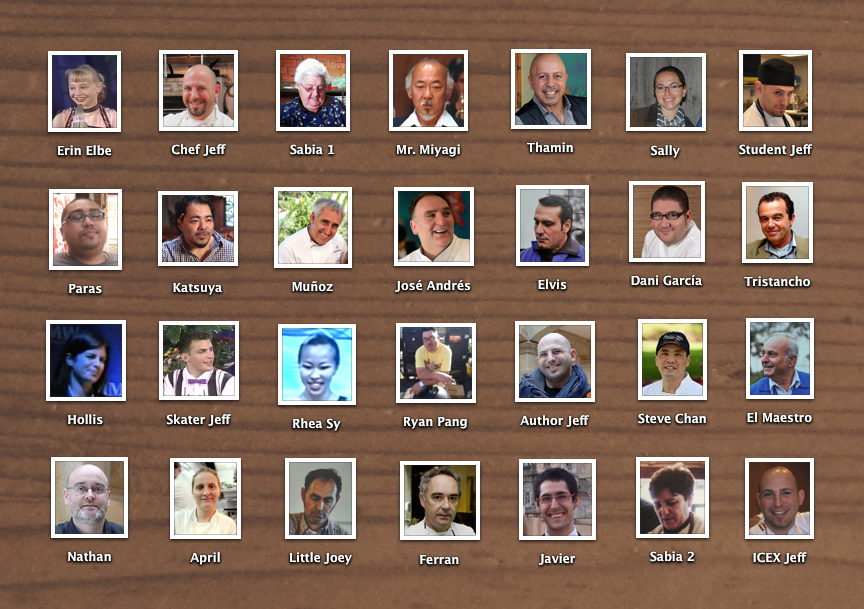 My knowledge of geography is pretty good; so, with Jeffrey Weiss mentioning ŌĆ£Pacific GroveŌĆØ just now, I can see itŌĆövaguely, in my head. I know that itŌĆÖs on the same peninsula along the ocean, roughly at the mid-point of CaliforniaŌĆÖs coastline, with Monterey just to the east, Carmel to the south, and Big Sur somewhere nearby. And, I almost see itŌĆöPacific Grove: a quaint town, no doubt, with manicured streets, store-lined sidewalks, and blue, foamy waters at its feet. But, IŌĆÖve never been there before; nor, have I seen any photos of it. Then, because of thatŌĆöbecause itŌĆÖs tenuousŌĆöitŌĆÖs lost. The image is gone.
My knowledge of geography is pretty good; so, with Jeffrey Weiss mentioning ŌĆ£Pacific GroveŌĆØ just now, I can see itŌĆövaguely, in my head. I know that itŌĆÖs on the same peninsula along the ocean, roughly at the mid-point of CaliforniaŌĆÖs coastline, with Monterey just to the east, Carmel to the south, and Big Sur somewhere nearby. And, I almost see itŌĆöPacific Grove: a quaint town, no doubt, with manicured streets, store-lined sidewalks, and blue, foamy waters at its feet. But, IŌĆÖve never been there before; nor, have I seen any photos of it. Then, because of thatŌĆöbecause itŌĆÖs tenuousŌĆöitŌĆÖs lost. The image is gone.
In that moment, I hear Jeffrey WeissŌĆÖs voice again, ŌĆ£I mean, I could throw a rock down the street; and, it would go into Monterey Bay. I have fishermen who call me from the water and tell me what they have.ŌĆØ I picture Weiss on his cell phone in his restaurant; and, I see a man standing erect on his fishing boat, holding a fish in his handŌĆögesturing as people do when theyŌĆÖre on the phoneŌĆöand happily saying something that a chef, needing a fresh catch, might want to hear. There are rods, maybe nets (IŌĆÖm not sure), and fish, wiggling, tangled with each other in a pile of fins and dampness. ItŌĆÖs like this that I see Jeffrey Weiss, under a cloudless sky, in his kitchen, inside his restaurant, in this idyllic placeŌĆöcooking as he desires.
ItŌĆÖs a place, at least, from my perspective, thatŌĆÖs nowhere and somewhere all at once and so far awayŌĆönot only from DC where I am, now, with WeissŌĆötalking and eating cured meats at The Partisan, a restaurant, like Weiss, thatŌĆÖs known for charcuterie but, also, far from the country with whose food Weiss fell in love: Spain. Spain is as distant as the intervening land and separating ocean make it out to be despite the pervasive Spanish influence in California. Spain, actually, is quite near to Pacific Grove in that sense; but, I know IŌĆÖm missing the point. Really, the distance is neither nearer nor farther. Weiss, who has traveled in Spain extensively, cooked there, and absorbed its food traditions, deals in something that canŌĆÖt be measured in miles.
Spain is his culinary muse; and, like Rick Bayless has Mexico and Andy Ricker has Thailand, Weiss has Spain; and, itŌĆÖs, frankly, as near as his own thoughtsŌĆöwhere the food and his experiences there, posing in present time, inform his instincts and shape whatŌĆÖs on his menu, at Jeninni Kitchen and Wine Bar, in Pacific GroveŌĆöwhere heŌĆÖs the executive chef. Customers may come for his famous paella, boasting saffron-scented rice laid out on a giant pan with shrimp that are almost the size of a manŌĆÖs fist; but, itŌĆÖs the elegant iterations of charcuterieŌĆöp├ót├®s, rillettes, terrines, and sausagesŌĆöthat provide a glimpse into his soul.
——————————————————————————————————————————
Charcuterie, that branch of cooking that deals in forcemeat, is revered for the textures and complex flavors that characterize it. Pork, the meat of choice, is made spreadable, pressed into loafs, shoved into casings, and, with the resources of space and timeŌĆöand revealing another facetŌĆöcombined with salt and spices, cured, and frequently smoked until it is transformed into luscious, mouthwatering hams. Artistry, know-how, and patience come together. ItŌĆÖs artisan in a way that is real and time-honored.
 Not surprisingly, itŌĆÖs also French charcuterie that we, as Americans, know bestŌĆöas the nomenclature and the very word, ŌĆ£charcuterie,ŌĆØ are, themselves, French. That circumstance is understandable given how French food and techniques so dominate in the West. Where there are any gaps, Italian salumi, which includes prosciutto and pancetta (among other familiar items), nudges out rivals and fills the holes without much complaint and fuss.
Not surprisingly, itŌĆÖs also French charcuterie that we, as Americans, know bestŌĆöas the nomenclature and the very word, ŌĆ£charcuterie,ŌĆØ are, themselves, French. That circumstance is understandable given how French food and techniques so dominate in the West. Where there are any gaps, Italian salumi, which includes prosciutto and pancetta (among other familiar items), nudges out rivals and fills the holes without much complaint and fuss.
The charcuterie of Spain, like a stepchild, is largely overlooked; and, that became all too apparent to Weiss when he worked as a line cook in New York, beginning in late 2010, at The Breslin, one of April BloomfieldŌĆÖs restaurantsŌĆöa sister spot to The Spotted Pig, BloomfieldŌĆÖs Michelin-starred gastropub in the West Village. For a time, Weiss worked the overnight shift.
ŌĆ£There was a team of guys making the charcuterie,ŌĆØ Weiss recalls. ŌĆ£But, there was this one old Swiss guy who was the main one doing the terrines and stuff.ŌĆØ He impressed Weiss. ŌĆ£He knew his shit,ŌĆØ Weiss declares. But, when Weiss asked him about morcilla, a blood sausage thatŌĆÖs popular in Spain, the ŌĆ£old Swiss guyŌĆØ drew an absolute blank. ŌĆ£What are you saying?ŌĆØ the old man retorted. Although Weiss doesnŌĆÖt convey the manŌĆÖs expression, I can see something hinting at consternationŌĆöas if he, with furrowed brows and pursed lipsŌĆöfelt that Weiss, an upstart line cook, was being deliberately challenging or obtuse. But, of course, Weiss wasnŌĆÖt.
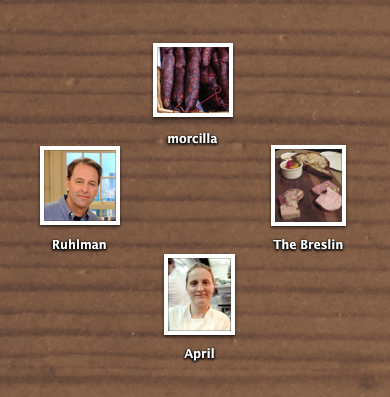 At that point, Spanish charcuterie, like a running commentary or an inescapable point of reference, had already gained prominence in WeissŌĆÖs mind; and, naturally, he simply wondered just how far this manŌĆÖs knowledge of charcuterie extended and, later, why, ultimately, he knew nothing about the Spanish version of it.
At that point, Spanish charcuterie, like a running commentary or an inescapable point of reference, had already gained prominence in WeissŌĆÖs mind; and, naturally, he simply wondered just how far this manŌĆÖs knowledge of charcuterie extended and, later, why, ultimately, he knew nothing about the Spanish version of it.
At The Breslin, there was a wall where cooking texts were shelved. Among the various titles, Weiss noticed Michael RuhlmanŌĆÖs tome on charcuterie, regarded by many as the seminal book on the topic, and the Culinary Institute of AmericaŌĆÖs ŌĆ£Garde MangerŌĆØ textbook, which focuses on food and recipes relating to the cold stationŌĆöincluding p├ót├®s and terrines. But, these books arenŌĆÖt about Spanish charcuterie. ŌĆ£ThereŌĆÖs no Spanish book,ŌĆØ Weiss, recalling his thoughts at the time, remembers. ŌĆ£I donŌĆÖt think anyoneŌĆÖs ever written about this stuff.ŌĆØ
It was, then, with these books in mind and noticing the void, that Weiss had his ŌĆ£ah-haŌĆØ moment. He would write a book himselfŌĆöa book about Spanish charcuterie. He did Google searches to see if any book had been published on the topicŌĆöto determine if his initial hunch was right. And, it was. There was nothing available in English and, incredibly, nothing in Spanish either. Weiss thought to himself, ŌĆ£Shit, I have a background in this stuff. I lived in Spain. I worked it. I saw it. I donŌĆÖt know if anyone in America right now other than a Spaniard has seen what IŌĆÖve seen.ŌĆØ Having spent the previous year in SpainŌĆötraveling and cooking there on scholarshipŌĆöit wasnŌĆÖt hyperbole; it was true.
——————————————————————————————————————————
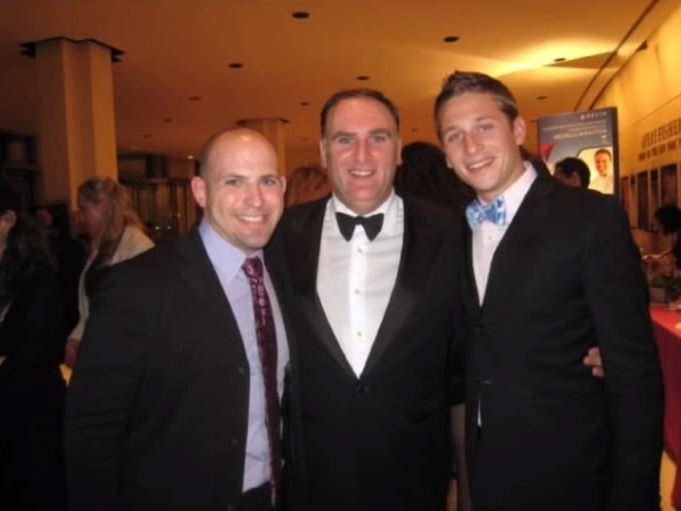 In 2009ŌĆöin the months before leaving for SpainŌĆöWeiss was still a student at Cornell UniversityŌĆÖs School of Hotel AdministrationŌĆöa school with an Ivy League pedigree and a long and esteemed history. Despite the school’s name and it’s implied focus, he had enrolled at the Hotel School to continue his pursuit of the culinary arts, which he had started at Mission College, a 2-year institution, a few years earlier but, also, more importantly, to study restaurant entrepreneurship.
In 2009ŌĆöin the months before leaving for SpainŌĆöWeiss was still a student at Cornell UniversityŌĆÖs School of Hotel AdministrationŌĆöa school with an Ivy League pedigree and a long and esteemed history. Despite the school’s name and it’s implied focus, he had enrolled at the Hotel School to continue his pursuit of the culinary arts, which he had started at Mission College, a 2-year institution, a few years earlier but, also, more importantly, to study restaurant entrepreneurship.
It was then, at a time when he had, essentially, a semester left before graduating, that he learned of a scholarship program, called the ŌĆ£The Training Program in Spanish Gastronomy,ŌĆØ that allows young people to travel to Spain, learn about the cuisine, and work as a culinary intern at some of the most acclaimed Spanish restaurants. The scholarship, which is offered under the auspices of the Spanish Institute of Foreign Trade or ICEX (Instituto Espa├▒ol de Comercio Exterior), was, at the time of Weiss’s participation, for a full year and was, from WeissŌĆÖs perspectiveŌĆöas one who was intensely interested in Spain and its foodŌĆöan opportunity of a lifetime.
Of course, there was the matter of applying for the scholarship in the first place. It accepted applicants internationally and was highly competitive. ŌĆ£There were over a hundred American applications alone that year,ŌĆØ Weiss says. Looking back, Weiss had concluded, if not a bit modestly, that his chances were slim because his cooking background was, in his estimation, not strong enough. ŌĆ£There were a lot of really talented guys,ŌĆØ Weiss explains. His good friend, Paras Shah, an ICEX scholarship winner during that same award cycle and who joined Weiss in Spain, was a chef at Momofuku Noodle Bar and had worked with Jonathan Benno at Per Se. No one would argue that Shah’s credentials werenŌĆÖt impressive; but, WeissŌĆÖs r├®sum├® wasnŌĆÖt anything to sneeze at either. He had a trump card in the form of Jos├® Andr├®s.
 Weiss had worked at Jaleo, Andr├®sŌĆÖs famed tapas bar in Washington, DC while he was enrolled at CornellŌĆöhaving secured a position there through Hollis Silverman, the director of restaurants and hospitality at Andr├®sŌĆÖs ThinkFoodGroup. One of WeissŌĆÖs professors contacted Silverman after Weiss had expressed a desire to work for Andr├®s. Given WeissŌĆÖs interest in Spanish cuisine, the hook up was a no-brainer.
Weiss had worked at Jaleo, Andr├®sŌĆÖs famed tapas bar in Washington, DC while he was enrolled at CornellŌĆöhaving secured a position there through Hollis Silverman, the director of restaurants and hospitality at Andr├®sŌĆÖs ThinkFoodGroup. One of WeissŌĆÖs professors contacted Silverman after Weiss had expressed a desire to work for Andr├®s. Given WeissŌĆÖs interest in Spanish cuisine, the hook up was a no-brainer.
Weiss, eventually, worked in DC at Jaleo for several months, in the premiere Spanish kitchen for the preeminent Spanish chef in the United States, won friends, and formed bondsŌĆöincluding a bond with Andr├®s himself. ŌĆ£One day, I was cleaning artichokes,ŌĆØ says Weiss. ŌĆ£And, I hear this booming voice: ŌĆśHola, amigo!ŌĆÖ ItŌĆÖs Jos├® Andr├®s. So, I talked with him for a while.ŌĆØ Andr├®s, according to Weiss, is very much the big personality that he famously appears to be.
As the head of the ThinkFoodGroup, with a restaurant empire to run, and a full schedule of conferences, speaking engagements, and public appearances taking him to and fro, Andr├®s couldnŌĆÖt have been around his DC restaurants all that muchŌĆöbut, at least, enough to catch Weiss on that one memorable occasion in JaleoŌĆÖs kitchen. But, it wasnŌĆÖt for Weiss, what was most memorable apparently. ŌĆ£ThereŌĆÖs a funny story,ŌĆØ Weiss confesses. ŌĆ£He actually had me go out to his house. I cooked at his house.ŌĆØ
With this admission, I wonder if Andr├®s, wanting to put his young cook through his paces, had called Weiss out to his house to test himŌĆöto see for himself what Weiss could do. Maybe, whatŌĆÖs funny was Weiss kicking some serious ass and cooking up a storm in the kitchen with Andr├®s looking onŌĆöwith a big approving smile that was the size of Spain on the famed chef’s face. Or, maybe, but, hopefully, notŌĆöthat by ŌĆ£funnyŌĆØŌĆöWeiss is really suggesting that there was a mishap of some sort with hilarity ensuing. Perhaps, Weiss had taken a spatula and flipped an omelette onto Andr├®sŌĆÖs head.
 Weiss, answering me, says. “It wasn’t an audition. He was having a party.” Weiss, then, explains the funny part. ŌĆ£Andr├®s let me drive his car.ŌĆØ I donŌĆÖt expect to hear that. ŌĆ£He had gotten a bunch of stuff for us to cook. And, then, he says, ŌĆśOh, no, I forgot the brioche.ŌĆÖŌĆØ But, apparently, as the host, Andr├®s was indisposed and couldnŌĆÖt leave. As Weiss remembers it, Andr├®s gave him some money to buy the briocheŌĆöa hundred bucks, which was a ridiculous amount and ten times what was neededŌĆöand told Weiss to run the errand for him. ŌĆ£Take my car,ŌĆØ Andr├®s said. ŌĆ£You go this way and this way, left, right, left, right; and, you get to the store…hereŌĆÖs my keys.ŌĆØ Hearing Weiss relay the episode, I see that Weiss is enjoying himself, that itŌĆÖs ŌĆ£funnyŌĆØ in the good sense; and, I can see Andr├®s, in his bombastic style, doing and saying just thatŌĆöalmost as a caricature of himself in a Saturday Night Live skit.
Weiss, answering me, says. “It wasn’t an audition. He was having a party.” Weiss, then, explains the funny part. ŌĆ£Andr├®s let me drive his car.ŌĆØ I donŌĆÖt expect to hear that. ŌĆ£He had gotten a bunch of stuff for us to cook. And, then, he says, ŌĆśOh, no, I forgot the brioche.ŌĆÖŌĆØ But, apparently, as the host, Andr├®s was indisposed and couldnŌĆÖt leave. As Weiss remembers it, Andr├®s gave him some money to buy the briocheŌĆöa hundred bucks, which was a ridiculous amount and ten times what was neededŌĆöand told Weiss to run the errand for him. ŌĆ£Take my car,ŌĆØ Andr├®s said. ŌĆ£You go this way and this way, left, right, left, right; and, you get to the store…hereŌĆÖs my keys.ŌĆØ Hearing Weiss relay the episode, I see that Weiss is enjoying himself, that itŌĆÖs ŌĆ£funnyŌĆØ in the good sense; and, I can see Andr├®s, in his bombastic style, doing and saying just thatŌĆöalmost as a caricature of himself in a Saturday Night Live skit.
Weiss continues, ŌĆ£And, I get into Jos├® Andr├®sŌĆÖs car and I take a photo, of course, because IŌĆÖm in Jos├® Andr├®sŌĆÖs car. And, I turn it on; thereŌĆÖs no gasŌĆ”like, itŌĆÖs on E.ŌĆØ Weiss hesitated and wondered whether or not he should go. He didnŌĆÖt want to get stuck somewhere and have to sheepishly call Andr├®s for helpŌĆöor, as I fear, be forced to stand on the side of the road and flag down a police car, all the while with a ŌĆ£hundred dollarŌĆØ loaf of brioche in the front seat. But, for me, it was clear. Chances are Andr├®s, welcoming a laugh and an opportunity to help yet again, wouldnŌĆÖt have minded getting that call.
Ultimately, Weiss did call Andr├®s for help after allŌĆöbut, under much different circumstances. When it came time to apply for the ICEX scholarshipŌĆöand with that year in Spain weighing on his mind, Weiss contacted Andr├®sŌĆÖs ThinkFoodGroup. ŌĆ£So, I called up Jos├®ŌĆÖs HR people and asked if they could write me a letter of recommendation. They said they would, and I didnŌĆÖt worry too much about it.” But, Andr├®s had taken matters into his own hands. Weiss still can’t believe it.
“I didn’t find out until later that Jose had picked up the phone and called Spain and said, ŌĆśTake that guy.ŌĆÖ I was one of two Americans who got in that year. There were only twelve of us from around the world that won it, and I was one of them because of Jos├®.ŌĆØ Weiss stops for a second and ponders the enormity of Andr├®sŌĆÖs gesture. ŌĆ£If Jos├® didnŌĆÖt make that phone call, I wouldnŌĆÖt have been accepted. I wouldnŌĆÖt have gone to Spain to see what I did. I wouldnŌĆÖt have written a book. I wouldnŌĆÖt be sitting where I am today. I owe him a lot.ŌĆØ
——————————————————————————————————————————
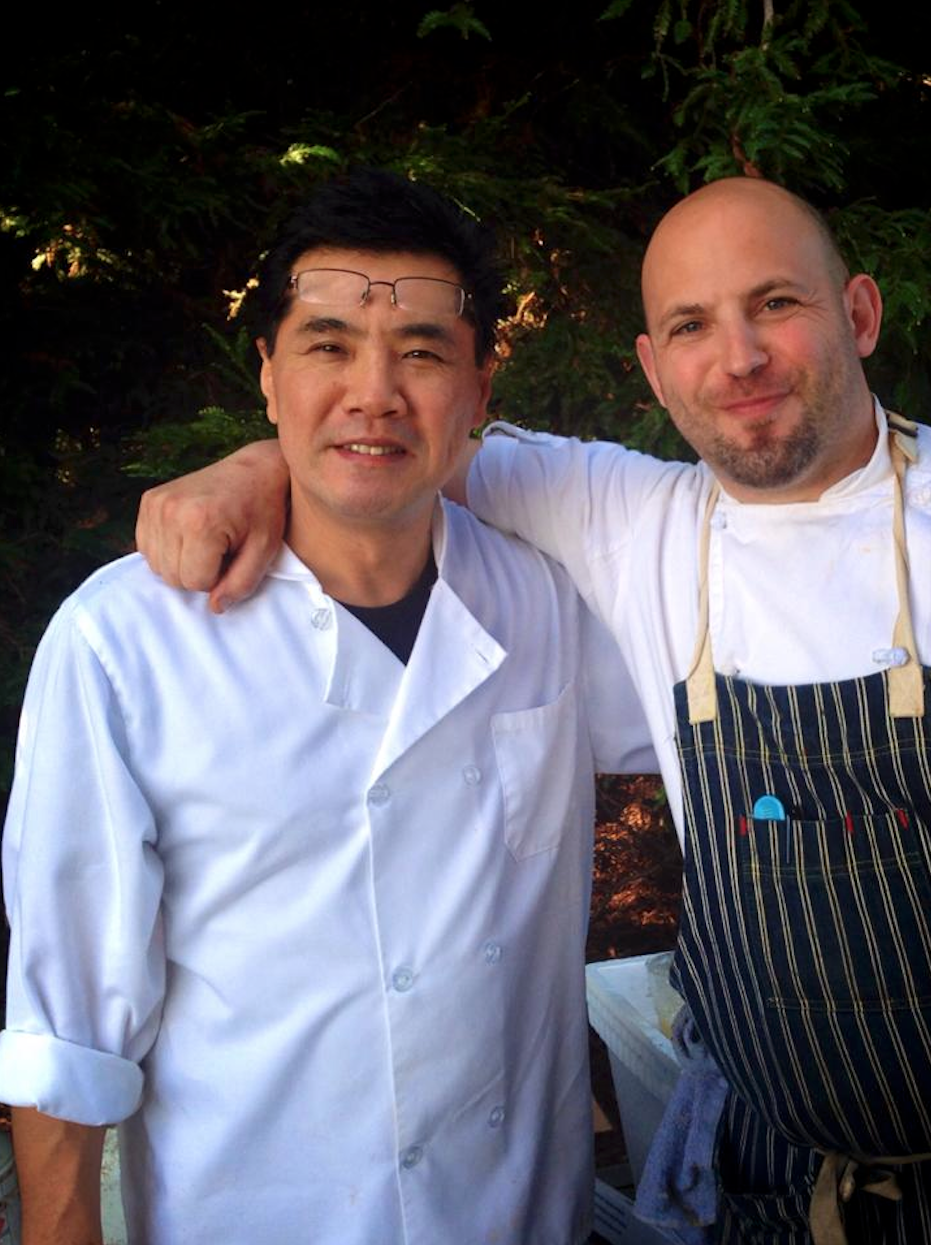 Weiss tells me that he owes Steve Chan a lot too. I hear him, but it doesnŌĆÖt register. IŌĆÖm distracted momentarily by our waiter who brings Weiss the bourbon heŌĆÖs ordered and fills my glass with water for what seems like the twelfth time. But, really, it isnŌĆÖt so much that IŌĆÖm reaching for my glass again to take an obligatory sipŌĆöto justify its being there and having just been filled so dutifullyŌĆöitŌĆÖs that the name catches me flat-footed.
Weiss tells me that he owes Steve Chan a lot too. I hear him, but it doesnŌĆÖt register. IŌĆÖm distracted momentarily by our waiter who brings Weiss the bourbon heŌĆÖs ordered and fills my glass with water for what seems like the twelfth time. But, really, it isnŌĆÖt so much that IŌĆÖm reaching for my glass again to take an obligatory sipŌĆöto justify its being there and having just been filled so dutifullyŌĆöitŌĆÖs that the name catches me flat-footed.
When I hear, ŌĆ£Steve Chan,ŌĆØ it doesnŌĆÖt mean anything to me. I canŌĆÖt place the name or think of a restaurant to go with it. ŌĆ£Who is he?ŌĆØ I ask myself as I rummage through my mental file of chefs. The name sounds like some kind of generic placeholderŌĆölike the Chinese version of ŌĆ£John DoeŌĆØ that might be used when a Chinese guy gets run over by a bus and canŌĆÖt be identified because heŌĆÖs not carrying I.D. The newspaper headline would read, ŌĆ£Unidentified Steve Chan Dies in Tragic Bus Accident.ŌĆØ
 But, as it turns out, Steve Chan, of course, is very much a real manŌĆöand, yes, a chefŌĆöat a place called, Fremont Hills Country Club; but, when Weiss met him, worked for him, and when Chan shook up WeissŌĆÖs world, Chan was the executive chef at Lion & Compass, a restaurant in Sunnyvale, California near where Weiss grew up and attended college.
But, as it turns out, Steve Chan, of course, is very much a real manŌĆöand, yes, a chefŌĆöat a place called, Fremont Hills Country Club; but, when Weiss met him, worked for him, and when Chan shook up WeissŌĆÖs world, Chan was the executive chef at Lion & Compass, a restaurant in Sunnyvale, California near where Weiss grew up and attended college.
ŌĆ£He and Martin Yan (of Yan Can Cook fame) were contemporaries; they worked together,ŌĆØ Weiss explains.ŌĆ£They were the original pan-Asian fusion type guys.ŌĆØ The mention of Martin Yan, suddenly, and WeissŌĆÖs linking him to Chan only makes me speculate more on why I hadnŌĆÖt heard of Chan before. I think, “He must be of some stature.” Weiss talks up Chan for a few minutes and, in doing so, refers to him as ŌĆ£my mentorŌĆØ on multiple occasions. ThereŌĆÖs an enthusiasm in WeissŌĆÖs voice and a palpable respect as heŌĆÖs sharing vignettes and recalling private interactions.
ŌĆ£ThatŌĆÖs how Steve Chan trained me.ŌĆØ The sentence jumps out from a string of wordsŌĆöwith nouns, verbs, and superlatives rolling off of WeissŌĆÖs lips. I nod assertively as if to say, ŌĆ£Oh, okayŌĆ”that Steve Chan;ŌĆØ but, I donŌĆÖt really knowŌĆönot until later, as IŌĆÖm intrigued by this manŌĆÖs role in WeissŌĆÖs life, and am moved enough to call Chan to find out for myself.
I catch Chan at Fremont Hills as heŌĆÖs winding down from his day. ŌĆ£Corbo,ŌĆØ he says with a warm, enthusiastic voice. ŌĆ£Is that you?ŌĆØ He says it like we’re old buddies and not because I had told him IŌĆÖd be calling him then. Although IŌĆÖm interested in finding out who he is and something about his career, heŌĆÖs more interested in talking about Weiss. And, he needs little if any prompting.
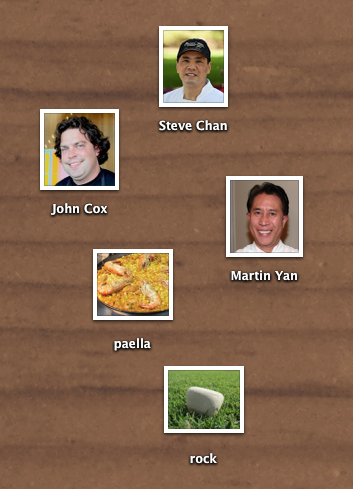 ŌĆ£Oh, that Jeffery! I mean, itŌĆÖs like IŌĆÖm his high school football coach; and, itŌĆÖs like seeing one of my star players go to the Super Bowl. IŌĆÖm just happy to be along for the ride, to witness it all. The guyŌĆÖs brilliant, absolutely brilliant. To be a mentor and have a prot├®g├® of that quality is a joy. ItŌĆÖs a joy to teach someone like that.ŌĆØ Chan is effusive. ItŌĆÖs like Chan had had a long, hard day and the opportunity to talk about Weiss has opened up the floodgates.
ŌĆ£Oh, that Jeffery! I mean, itŌĆÖs like IŌĆÖm his high school football coach; and, itŌĆÖs like seeing one of my star players go to the Super Bowl. IŌĆÖm just happy to be along for the ride, to witness it all. The guyŌĆÖs brilliant, absolutely brilliant. To be a mentor and have a prot├®g├® of that quality is a joy. ItŌĆÖs a joy to teach someone like that.ŌĆØ Chan is effusive. ItŌĆÖs like Chan had had a long, hard day and the opportunity to talk about Weiss has opened up the floodgates.
ŌĆ£He got to work in some of the top restaurants in Spain, in the world really, working with some of the top chefs around,ŌĆØ Chan continues. ŌĆ£And, he still calls me every so often and thanks me. I say, ŌĆśJesus Christ! Save that little ink.ŌĆÖ He thanks me when he gets interviewed. He talks about me in interviews. ŌĆśStop this. Use that little bit of ink for yourself.ŌĆÖ But, the man is genuine. HeŌĆÖs genuine.ŌĆØ
I have to rely on Weiss to fill in the back story. ŌĆ£Steve grew up on the streets of San Francisco,ŌĆØ Weiss tells me before my calling Chan. ŌĆ£He ran with the old gangs in Chinatown back in the 60s and 70s. He was a punk off the streets. His brother, who was a chef too, got Steve into the ACF (American Culinary Federation) program out of the Community College of San Francisco.ŌĆØ Weiss goes on to weave a tale, a rescue story of sorts of how Chan, post-ACF, eventually landed at ŌĆ£one of the grand kitchens back in the day where there were multiple chefs de partie, garde mangers, butchers, specialists, the whole thing.ŌĆØ There, as fate would have it, Chan found a mentorŌĆösomeone Weiss describes as an ŌĆ£old Swiss guy.ŌĆØ
I immediately notice that itŌĆÖs the same tag that Weiss gave the master terrine maker who had so impressed him back at The Breslin in New York, the old man who ended up not knowing anything about Spanish charcuterie when questioned. ŌĆ£There are a lot of old Swiss guys kicking ass in restaurant kitchens,ŌĆØ I think to myself. Apparently, this one whipped Chan into shape.
When I finally get Chan to speak about himself, he doesnŌĆÖt mince words. ŌĆ£IŌĆÖm from the old school,ŌĆØ he tells me ardently. ŌĆ£That means a chef leading his troops. A chef might say, ŌĆśMove faster.ŌĆÖ Then, a chef has to be able to show them. The chef has to be the most highly skilled guy in the kitchenŌĆöthe fastest, the smartest. ThatŌĆÖs what he has to be in order to lead his troops.ŌĆØ
Chan elaborates more, which leads into remarks about motivating his cooks and, most crucially, how they should be treated. ŌĆ£As a cook, youŌĆÖre making $15 – $16 per hour, which is peanuts. ItŌĆÖs hard work, you know. A lot of chefs donŌĆÖt give a crap. If a cook canŌĆÖt do the job, the chef says, ŌĆśAlright, IŌĆÖll go find someone else.ŌĆÖ I mean, your people are your assets. Every general is still a soldier. A chef is still a cook. Every cook contributes. The dishwasher has to be proud of what he does. You have to instill that.ŌĆØ
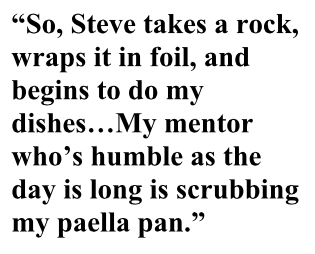 Weiss, who met up with Chan not long ago, tells me about that day. Upon hearing it, it strikes me as a story of ChanŌĆÖs kindness and generosity. But, the story takes on a much larger meaning after speaking with Chan and absorbing his remark about a dishwasher being proud of his work. ŌĆ£I was doing a paella cooking demonstration,ŌĆØ Weiss says, beginning his account of what happened. ŌĆ£It was at this big, beautiful hotel out in Big Sur with John Cox, the chef there. WeŌĆÖre doing this big food and wine thing; and, IŌĆÖm making paella overlooking the ocean. I invited Steve to hang out.ŌĆØ
Weiss, who met up with Chan not long ago, tells me about that day. Upon hearing it, it strikes me as a story of ChanŌĆÖs kindness and generosity. But, the story takes on a much larger meaning after speaking with Chan and absorbing his remark about a dishwasher being proud of his work. ŌĆ£I was doing a paella cooking demonstration,ŌĆØ Weiss says, beginning his account of what happened. ŌĆ£It was at this big, beautiful hotel out in Big Sur with John Cox, the chef there. WeŌĆÖre doing this big food and wine thing; and, IŌĆÖm making paella overlooking the ocean. I invited Steve to hang out.ŌĆØ
Weiss, who had learned how to make paella in Alicante, SpainŌĆöat a renowned restaurant famous for itŌĆöhad never doubted his own handiwork. But, Chan, noticing that it was just slightly off, whispered a tip into WeissŌĆÖs earŌĆöon how to improve it, something about the broth. ŌĆ£It turned out even better. He was absolutely right because he knows. And, heŌĆÖs Steve.ŌĆØ
With the paella done and Weiss busy mingling with the guests, Chan began washing and cleaning up. ŌĆ£ThereŌĆÖs no dishwashing station,ŌĆØ Weiss explains. ŌĆ£So, Steve takes a rock, wraps it in tin foil, and begins to do my dishes. My mentorŌĆ”ŌĆØ Weiss stops mid-sentence. ThereŌĆÖs incredulity in his voice. ŌĆ£My mentor whoŌĆÖs humble as the day is long is scrubbing my paella pan.ŌĆØ Weiss looks at me. ItŌĆÖs a look that suggests thankfulness, amazement, and a bunch of assorted feelings in between.
ChanŌĆÖs version is a bit more matter-of-fact. ŌĆ£Yeah, I thought it was pretty clever. We literally had no soap and water. It was a paella pan which is pretty gritty and very seasoned. So, I take this rock and foil and try it. He needed his pan washed; so, I washed it. No big deal.ŌĆØ
Chan was probably crouching, scrubbing the big, shallow paella panŌĆögoing around and around that thing, a 16 inch pan, scrubbing away to get off the stuck on rice and charred bits. ŌĆ£The guyŌĆÖs so humble,ŌĆØ Weiss says flatly and resolutely to conclude the story. ŌĆ£I hope, one day, to be like that.ŌĆØ
——————————————————————————————————————————
 Jos├® Andr├®s was a mover and shaker even during WeissŌĆÖs time in DC and, already, a figureheadŌĆöa chef turned famous restaurateur and cultural icon who, seemingly, wielded more clout and influence outside of the kitchen as a businessman. Although he hadnŌĆÖt yet expanded to Las Vegas or South Beach yet, Andr├®s was already a successful empire builder who had made DCŌĆÖs Penn Quarter neighborhood unofficially his.
Jos├® Andr├®s was a mover and shaker even during WeissŌĆÖs time in DC and, already, a figureheadŌĆöa chef turned famous restaurateur and cultural icon who, seemingly, wielded more clout and influence outside of the kitchen as a businessman. Although he hadnŌĆÖt yet expanded to Las Vegas or South Beach yet, Andr├®s was already a successful empire builder who had made DCŌĆÖs Penn Quarter neighborhood unofficially his.
In addition to Jaleo, which was located on 7th Street, Andr├®s had opened Oyamel, which served modern Mexican fare, a couple of blocks to the south. Zaytinya, serving Mediterranean-inspired small plates behind a great modern edifice, occupied the corner at 9th and G Streets across the street from the main library. MinibarŌĆöhis famous crown jewel, known for its exclusive six seat counter and impossible to get reservationsŌĆöwas, then, before relocating, just around the corner from Jaleo and Oyamel on 8th Street in a building that also housed the now shuttered Caf├® Atl├Īntico, Andr├®sŌĆÖs showcase for ŌĆ£Nuevo LatinoŌĆØ cuisine.
Katsuya Fukushima, the chef and owner of Daikaya, the popular ramen bar and izakaya in DCŌĆÖs Chinatown, had been part of that empire building as Andr├®sŌĆÖs right hand man by helping him open all of his DC restaurants. Originally from Hawaii, Fukushima was essentially a local productŌĆöhaving studied at the University of Maryland and LŌĆÖAcademie de Cuisine in suburban College Park and Gaithersburg respectively. He rose up the ranks in the DC dining scene and gained a reputation for his talent and technical wizardry before Andr├®s snatched him up.
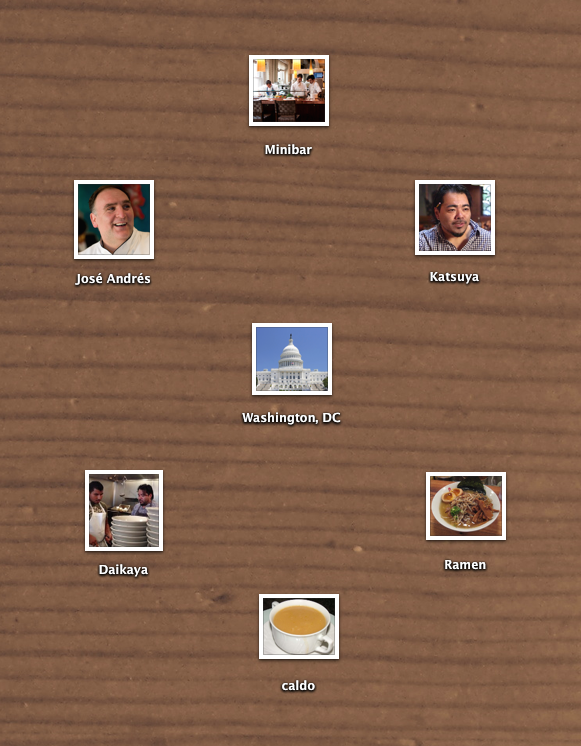 Fukushima, somehow, had even spent time, before working for Andr├®s, at elBulli (where Andr├®s, also, before him, had cooked) under Ferran Adri├Ā, the greatest of Spanish chefs and the so-called ŌĆ£father of molecular gastronomy.ŌĆØ There, Fukushima honed his already prodigious skills and, in that laboratory of a kitchen, gained even more as elBulliŌĆÖs secrets ultimately became part of his own body of knowledgeŌĆöone that served him well in his full-time gig as the chef de cuisine at Caf├® Atl├Īntico and Minibar.
Fukushima, somehow, had even spent time, before working for Andr├®s, at elBulli (where Andr├®s, also, before him, had cooked) under Ferran Adri├Ā, the greatest of Spanish chefs and the so-called ŌĆ£father of molecular gastronomy.ŌĆØ There, Fukushima honed his already prodigious skills and, in that laboratory of a kitchen, gained even more as elBulliŌĆÖs secrets ultimately became part of his own body of knowledgeŌĆöone that served him well in his full-time gig as the chef de cuisine at Caf├® Atl├Īntico and Minibar.
As an up-and-comer, toiling away at Jaleo, and ever aware that he was very much a chef-in-training, Weiss, undoubtedly, admired Fukushima. The two men, I assume, are near in age; but, IŌĆÖm not sure. ItŌĆÖs just that WeissŌĆÖs tone is just soŌĆöthat I get this feeling that he saw Fukushima as a role model of sorts, that Weiss wanted to emulate him, like a younger brother might an older brother or, in my mind, like how IŌĆÖd regard a freelance writer whoŌĆÖs been published in the best food magazines and who can turn a phrase as easily as chewing gum.
ŌĆ£Katsuya was at Minibar. He was Jos├®ŌĆÖs R and D guy. He was such a rock star. I have so much respect for that man. I just wanted to learn, and he let me learn.ŌĆØ In that effort, Weiss made a frequent point of visiting Fukushima in his kitchen to glean whatever he could from him.
 In fact, before meeting with me, Weiss tells me that he had actually gone to see Fukushima, earlier, in the afternoon, at his restaurant, Daikaya, to enjoy a bowl of ramenŌĆönot a bad choice on a cold, blustery day like todayŌĆöand, to reminisce. ŌĆ£You know,ŌĆØ he says in a slightly lowered voiceŌĆöas if anyone is going to overhear him. ŌĆ£Katsuya, his broth, for his different ramens, uses the master stock technique. So, his broth is over two years old, you know. It was very good today.ŌĆØ
In fact, before meeting with me, Weiss tells me that he had actually gone to see Fukushima, earlier, in the afternoon, at his restaurant, Daikaya, to enjoy a bowl of ramenŌĆönot a bad choice on a cold, blustery day like todayŌĆöand, to reminisce. ŌĆ£You know,ŌĆØ he says in a slightly lowered voiceŌĆöas if anyone is going to overhear him. ŌĆ£Katsuya, his broth, for his different ramens, uses the master stock technique. So, his broth is over two years old, you know. It was very good today.ŌĆØ
Then, Weiss and I have a brief exchange where he brings up the current bone broth craze and how heŌĆÖs serving something like bone broth at his restaurant, JeninniŌĆöbut not as a hollow nod to a fad but because, as he explains it, itŌĆÖs part of Spanish tradition. ŌĆ£ItŌĆÖs called caldo. If you walk around the North of Spain in the mountain towns where itŌĆÖs cold right now, there are signs out in front of these placesŌĆ”chalkboards that read, ŌĆśHay, Caldo,ŌĆÖ which means ŌĆśthere is broth today.ŌĆÖ The tradition is that, when itŌĆÖs cold outside and you want to warm up, you donŌĆÖt get liquor.ŌĆØ
Weiss and I talk about bone broth and ramen for a few more minutesŌĆöthe alchemy of the conversation making want to go straight home and concoct a witchŌĆÖs brew. But, then, Weiss gathers himself and picks up where he left off. ŌĆ£I would be at Jaleo to do my eight hour shift and then, on my time, IŌĆÖd go around the corner to MinibarŌĆ”well, actually, IŌĆÖd go work at Atl├Īntico because Katsuya didnŌĆÖt trust me at Minibar. IŌĆÖll do whatever you need,ŌĆØ Weiss remembers saying to him. ŌĆ£IŌĆÖll clean fucking mushrooms, whatever.ŌĆØ And, Fukushima, recognizing WeissŌĆÖs pluck and determination, allowed him to do just that. ŌĆ£I spent a lot of time there.ŌĆØ
——————————————————————————————————————————
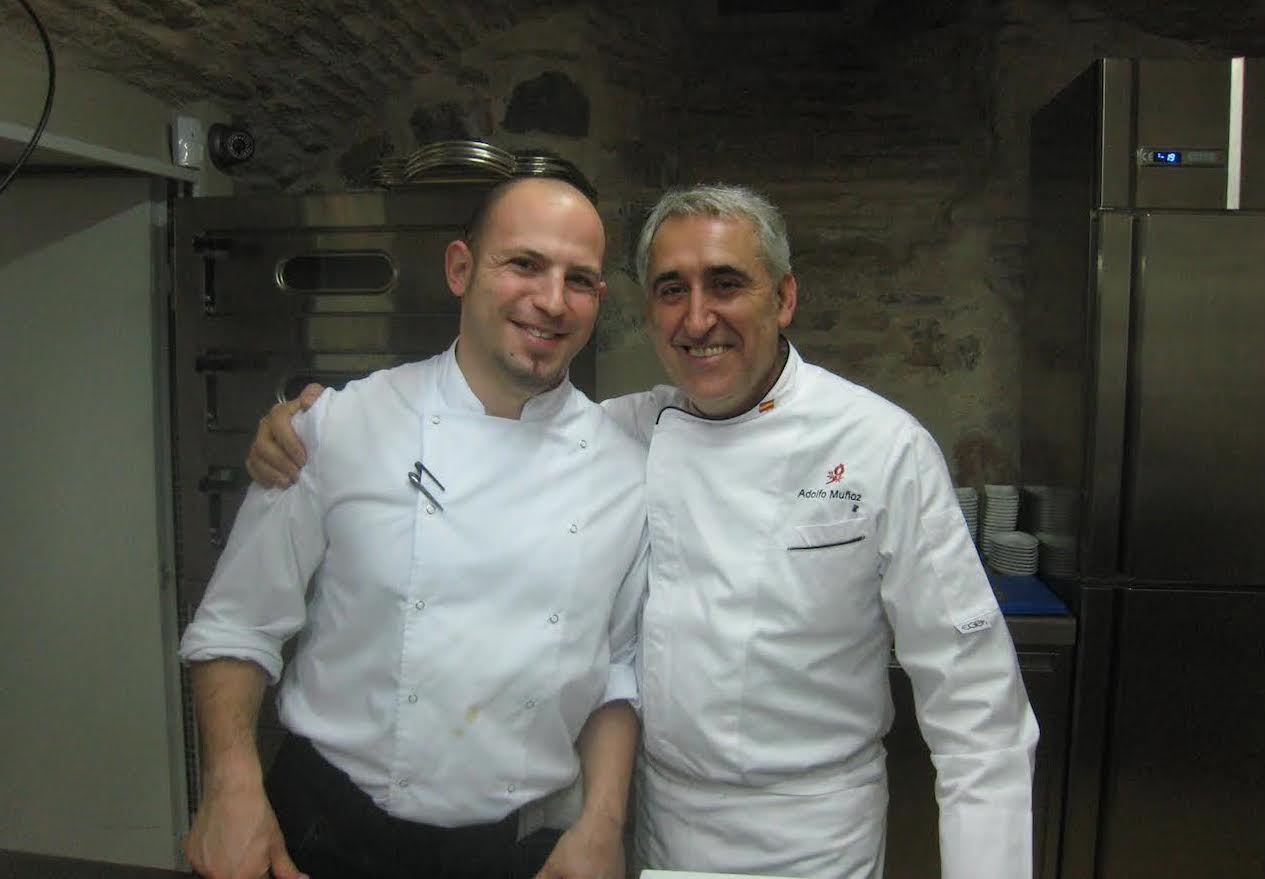 In the fall of 2009, when Weiss was bound for Spain to begin his scholarship program, he had already mapped out his plan. No doubt thinking of Fukushima and his exploits at Minibar, Weiss wanted to intern and cook at elBulli. Who wouldnŌĆÖt have wanted to do that? Ferran Adri├ĀŌĆÖs reputation in culinary circles was legendary; and, the allure of tweezers and foam and food as modern as modern can be would have wooed most aspiring chefs.
In the fall of 2009, when Weiss was bound for Spain to begin his scholarship program, he had already mapped out his plan. No doubt thinking of Fukushima and his exploits at Minibar, Weiss wanted to intern and cook at elBulli. Who wouldnŌĆÖt have wanted to do that? Ferran Adri├ĀŌĆÖs reputation in culinary circles was legendary; and, the allure of tweezers and foam and food as modern as modern can be would have wooed most aspiring chefs.
But, Andr├®s talked Weiss out of it but not for reasons most of us would assume, that of saving an ambitious cook from the excesses of something too advancedŌĆölike a father might convince his young son to put on training wheels first before riding off unassisted. Rather, Andr├®sŌĆÖs argued that Weiss would get lost in the shuffle in a crowded kitchen. ŌĆ£Well, youŌĆÖre going to be one of sixty guys over there,ŌĆØ Andr├®s warned. ŌĆ£Look, go to Dani Garc├Ła. Dani Garc├Ła is the king of liquid nitrogen. HeŌĆÖs the next Ferran.ŌĆØ
 Prior to winning his scholarship, Weiss had already visited Spain because his sister had studied abroad, gotten married, and settled in Spain permanently. On a trip out there to visit her, Weiss had dined at Restaurant Adolfo, Adolfo Mu├▒ozŌĆÖs outpost in Toledo where he met Mu├▒ozŌĆÖs son, Javier, and his daughter, Veronica. And, it was that connection that lingered and that drew Weiss to Mu├▒oz when it came time to select which restaurants would become part of his scholarship year. So, in the end, Weiss choose to work with Dani Garc├Ła and Adolfo Mu├▒oz.
Prior to winning his scholarship, Weiss had already visited Spain because his sister had studied abroad, gotten married, and settled in Spain permanently. On a trip out there to visit her, Weiss had dined at Restaurant Adolfo, Adolfo Mu├▒ozŌĆÖs outpost in Toledo where he met Mu├▒ozŌĆÖs son, Javier, and his daughter, Veronica. And, it was that connection that lingered and that drew Weiss to Mu├▒oz when it came time to select which restaurants would become part of his scholarship year. So, in the end, Weiss choose to work with Dani Garc├Ła and Adolfo Mu├▒oz.
Of course, Weiss had the best of both worlds. Mu├▒oz is a product of SpainŌĆÖs La Mancha region where the cooking is more rustic and rooted to a people and place. ŌĆ£Toledo is Don Quixote,ŌĆØ Weiss explains to me, referencing the famous literary Man of La Mancha. ŌĆ£The Spanish kind of regard La Mancha as the New Jersey of Spain. They look down on it a little bit. But, it doesnŌĆÖt get more classic than Quixote. And, thatŌĆÖs the food of the poor. ItŌĆÖs the poorest of the poor out there back in the day. So, the tradition of that was something I wanted to see.ŌĆØ
On that basis, Weiss decided to go to Toledo first to work with Mu├▒oz where he would likely encounter hearty stews and braisesŌĆöwith homely ingredients like olives, thyme, tomatoes, bread, potatoes, and lamb shoulder doing the heavy lifting. He knew afterwards, that heŌĆÖd have a fundamental understanding of Spanish cooking as a result, which would ground him once he moved on to Calima, Dani Garc├ŁaŌĆÖs restaurant in Marbella.
There, it would be less about grounding oneself in tradition but, rather, pushing the culinary envelope further. Working under ŌĆ£the king of liquid nitrogen,ŌĆØ as Jose Andr├®s had called Garc├Ła, would mean, Weiss, immersing himself in “molecular gastronomy,” a style of cooking whose label seems to have been coined specifically for Ferran Adri├Ā and Dani Garc├Ła and the modernist cuisine that they represent and helped make famous.
It would mean freezing all manner of edible things to chase freakishly new creationsŌĆömaking sorbet from wine, for example, or depositing pur├®ed vegetables into a vat of that liquid magic, watching the frozen vapors rising up from the elixir, and reaching in to pull out something exhibiting a dramatically changed texture. It would be like going off to science camp where all the experiments would involve food in some way.
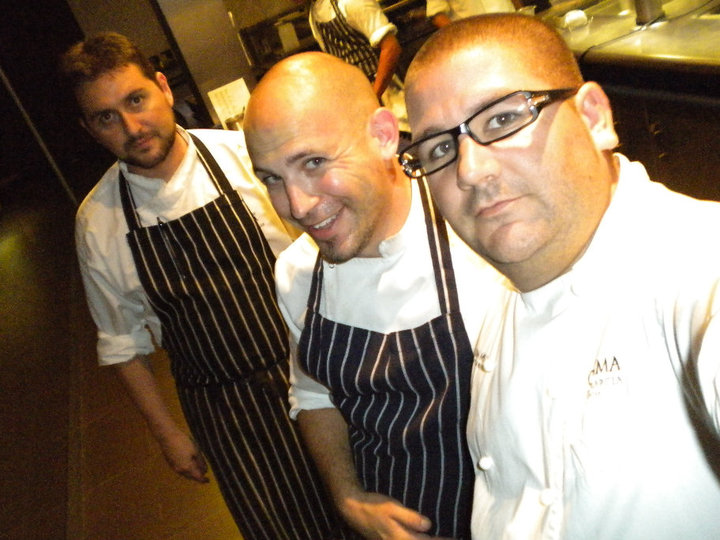 ——————————————————————————————————————————
——————————————————————————————————————————
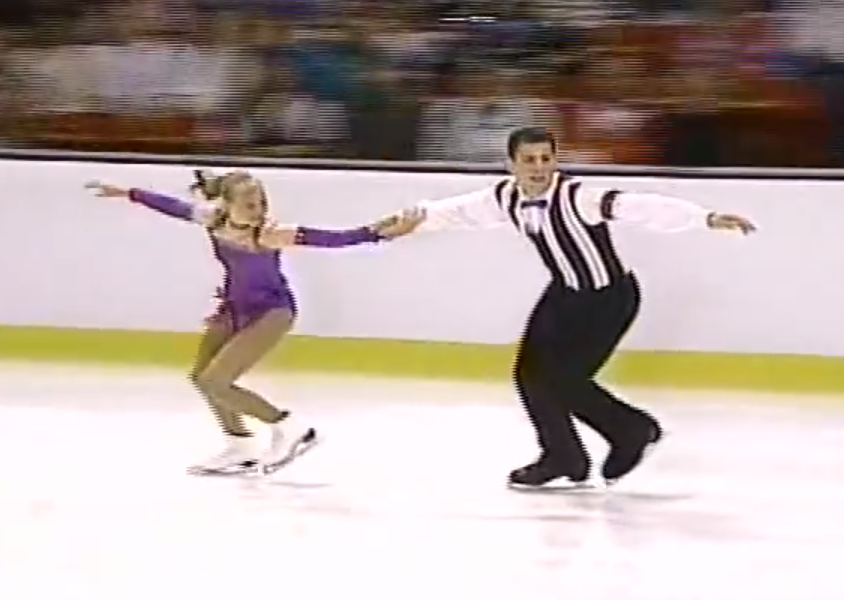 Growing up in Foster City, CaliforniaŌĆöin the Bay Area between San Francisco and San JoseŌĆöWeiss knew nothing of liquid nitrogen, of course. I donŌĆÖt think even Ferran Adri├Ā with a crystal ball at his disposal had in those days. But, Weiss knew a thing or two about frozen vapors. HeŌĆÖd seen them, not in a kitchen, but, on an ice rink and, undoubtedly, on countless occasions. Before food and becoming a chef had taken over his life, Weiss was an elite pair skater, one who competed at the U.S. Figure Skating Championships. In 1996, with partner, Erin Elbe, he had won a silver medal.
Growing up in Foster City, CaliforniaŌĆöin the Bay Area between San Francisco and San JoseŌĆöWeiss knew nothing of liquid nitrogen, of course. I donŌĆÖt think even Ferran Adri├Ā with a crystal ball at his disposal had in those days. But, Weiss knew a thing or two about frozen vapors. HeŌĆÖd seen them, not in a kitchen, but, on an ice rink and, undoubtedly, on countless occasions. Before food and becoming a chef had taken over his life, Weiss was an elite pair skater, one who competed at the U.S. Figure Skating Championships. In 1996, with partner, Erin Elbe, he had won a silver medal.
Not being an avid fan of the sportŌĆöparticularly, in the mid-90s and early 2000s when I was following professional football or even, more likely, the U.S. bobsled teamŌĆöI had known nothing of Jeffrey Weiss, the pair figure skater and had only heard of this part of his past in a tangential way once I had learned of him as a chef. I remember being, frankly, surprised at first.
Chefs, of course, donŌĆÖt emerge fully formed. Like with any profession, the road from point A to point B can be circuitous and unpredictable. I had thought that going from figure skater to chef, at face value at least, was a big leap between two seemingly unrelated pursuits. But, reallyŌĆölooking closely at itŌĆöthereŌĆÖs physicality to being a chef that, at least, mimics being an athlete. ThereŌĆÖs the need for exertion, stamina, and strength: the traits of an athlete. Weiss is a stout manŌĆönoticeably big boned, muscular, and, inarguably, strong.
 ŌĆ£I did pairs,ŌĆØ states Weiss clearly. His calm, matter-of-fact tone does its best to take the apparent disconnection away. ŌĆ£I enjoyed being in a team environment where it wasnŌĆÖt just me having to do something. I had to communicate with my skating partner and come together to figure out how to do x, y, and z. That was cool. I liked that.ŌĆØ When I probe further, Weiss emphatically reiterates that he had had no interest in skating individually. That wasnŌĆÖt what appealed to him. ŌĆ£I like being part of a team, and it equates to what I do today.ŌĆØ
ŌĆ£I did pairs,ŌĆØ states Weiss clearly. His calm, matter-of-fact tone does its best to take the apparent disconnection away. ŌĆ£I enjoyed being in a team environment where it wasnŌĆÖt just me having to do something. I had to communicate with my skating partner and come together to figure out how to do x, y, and z. That was cool. I liked that.ŌĆØ When I probe further, Weiss emphatically reiterates that he had had no interest in skating individually. That wasnŌĆÖt what appealed to him. ŌĆ£I like being part of a team, and it equates to what I do today.ŌĆØ
ŌĆ£I work really well with Thamin,ŌĆØ Weiss says, referring to his business partner, Thamin Saleh, the owner at Jeninni Kitchen and Wine Bar. ŌĆ£WeŌĆÖre a team together. He runs the front. I run the back. He has a strong accounting background. I donŌĆÖt love accounting. He has incredible wine knowledgeŌĆ”more than I will ever have and ever want to have. HeŌĆÖs very gregarious, a front of house specialist. He knows how to handle tables, how to handle guests. I love the food side. I know a lot about the food side. I donŌĆÖt know everything; but, I know a lot.ŌĆØ Weiss almost runs out of breath but adds the clincher, ŌĆ£HeŌĆÖs exceptionally good at all the things that IŌĆÖm not good at.ŌĆØ
Now, hearing him speak about the appeal of teamwork, the picture begins to fill in; and, I realize how Weiss sees the connection between skating and being a chef. But, also, I sense that something else, besides enjoying teamwork, like sheer determination or immense skill, is at play as wellŌĆöthat no one could possibly be successful as a figure skater (or a chef) without one of those forces. “You were pretty damn good.ŌĆØ I say assertively. Without hesitation, Weiss answers back, ŌĆ£I was pretty damn stubborn. I goofed off way too much. You always had to go chase me down in order for me to practice.ŌĆØ
But, as we talk further, I see WeissŌĆÖs self deprecation for what it is. Behind his supposed ŌĆ£goofing off,ŌĆØ there really was something pushing him as wellŌĆölike that undeniable edge beneath a comedianŌĆÖs humorous fa├¦ade. ŌĆ£The Olympics were something you wanted, right?ŌĆØ I ask. Weiss makes it clear. ŌĆ£The Olympics? Hell, yeah. I mean, thatŌĆÖs what we work for. All that. ItŌĆÖs a goal to be achieved if you can. But, what percentage of skaters or any athlete in any sport gets to do the Olympics? ItŌĆÖs tiny. But, you do it because you enjoy it and because youŌĆÖre good at it. You do it because itŌĆÖs partly your job. I mean, there were days when I enjoyed it a lot less than others, you know. But, it was something that I knew I was good at and wanted to see how far I could take it.ŌĆØ
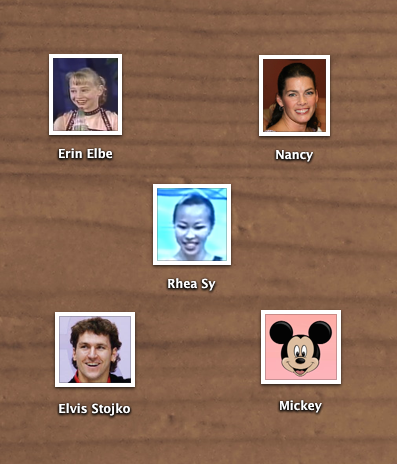 And, being true to himself, Weiss took it as far as he could. ŌĆ£Well, at one point, I had broken up with one skating partner. And, I was training a little bit on my own. Then, I was ready to find a new pair partner.” It was serendipitous that a female skater in L.A., named Rhea Sy, had just recently broken up with her partner as well. Mutually looking for new pair partners, Weiss met Sy. If there had been any doubt about whether or not she had what it took, Weiss resolved that question in his mind rather quickly. “She was good,” Weiss says. “GOOD,ŌĆØ he repeats boldly, leaving no doubt about her talent. ŌĆ£On a scale of one to ten, she was a twelve.ŌĆØ
And, being true to himself, Weiss took it as far as he could. ŌĆ£Well, at one point, I had broken up with one skating partner. And, I was training a little bit on my own. Then, I was ready to find a new pair partner.” It was serendipitous that a female skater in L.A., named Rhea Sy, had just recently broken up with her partner as well. Mutually looking for new pair partners, Weiss met Sy. If there had been any doubt about whether or not she had what it took, Weiss resolved that question in his mind rather quickly. “She was good,” Weiss says. “GOOD,ŌĆØ he repeats boldly, leaving no doubt about her talent. ŌĆ£On a scale of one to ten, she was a twelve.ŌĆØ
What so impressed Weiss was that Sy was able to complete a triple throw salchowŌĆöan unheard of feat, given the context. He stresses this fact with me, explaining it in terms a non-skater would understand. ŌĆ£We did a singleŌĆ”no problem, then, a double. Then, she said, ŌĆśIŌĆÖm ready to do a triple.ŌĆÖ You NEVER do a triple on the first day of a tryout. But, we did it; and, she landed. I was like, ŌĆśHoly, shit!ŌĆÖ This girl is ridiculous and awesome and brave and strong. SheŌĆÖs everything you want.ŌĆØ
It was a find that one would assume had propelled Weiss to new heights in his skating careerŌĆöto finally have such a partner. ItŌĆÖs the kind of seminal moment that would have illustrated all that stuff about teamwork that he elaborated on and that, if it were embedded in a book, would have tempted a reader to flip ahead to see what sort of athletic brilliance or sporting glory had taken place in the ensuing months and years ahead. But, in that encounterŌĆöto borrow a metaphor from another sportŌĆölife had thrown Weiss a curveball. He hadnŌĆÖt met someone who would accompany him into the futureŌĆöto further help write his story. Instead, he had met someone who would help him close this chapter of his life.
ŌĆ£After we finished, we said our goodbyes; and, I went to this little local restaurant to eat. I sat down, looked out the window, and said to myself, ŌĆśI donŌĆÖt want to do this.ŌĆÖ I had found the most perfect pair partner. This girl is everything. But, I donŌĆÖt want to do this.ŌĆØ At the restaurant, Weiss called Sy to explain to her, as best as he could, what he had decidedŌĆöthat his heart wasnŌĆÖt in it anymore and that her being ŌĆ£so fucking good,ŌĆØ as Weiss puts it, had made him see that. Sy understood. I understand too.
 Weiss shakes his head, takes a sip of his bourbon, and says, ŌĆ£I didnŌĆÖt want to waste her time.ŌĆØ I see it as true. But, also, I see that Weiss didnŌĆÖt want to waste his time eitherŌĆöwith the arduous training thatŌĆÖs certainly needed and always having to reach deep within to extract every last drop of motivation. Then, as Weiss confesses to me even further, there was the prospect of becoming what ice skaters, whose competitive and amateur careers have ended, eventually become if they join the professional ranks. ItŌĆÖs the touring and performances.
Weiss shakes his head, takes a sip of his bourbon, and says, ŌĆ£I didnŌĆÖt want to waste her time.ŌĆØ I see it as true. But, also, I see that Weiss didnŌĆÖt want to waste his time eitherŌĆöwith the arduous training thatŌĆÖs certainly needed and always having to reach deep within to extract every last drop of motivation. Then, as Weiss confesses to me even further, there was the prospect of becoming what ice skaters, whose competitive and amateur careers have ended, eventually become if they join the professional ranks. ItŌĆÖs the touring and performances.
ItŌĆÖs the mentioning of this that triggers a memory for me, suddenly, of seeing on TV, somewhere, famous skaters like Nancy Kerrigan and Elvis SkojkoŌĆödressed in sequined outfitsŌĆöskating in a show. And, maybe, IŌĆÖm remembering it incorrectly; but, somehow, men in animal costumes and 80s-era synth pop are involved. ItŌĆÖs undoubtedly, that Weiss, seeing something like I see, saw his future and didnŌĆÖt like it. ŌĆ£ItŌĆÖs good money, but I just wanted something other than being Mickey Mouse in a fucking ice show.ŌĆØ
Ice skating had been like an old shoe for himŌĆöcomfortable, familiar, unconscious. He was four when he first stepped onto an ice rink; and, skating, during his youth and into his twenties, was his life, his ŌĆ£jobŌĆØ as he had said. One doesnŌĆÖt get rid of an old pair of shoes (or pair of skates, as it were) without getting a new pair. Walking around in socks isnŌĆÖt an option. About ending his ice skating career, I have a suspicion about something; so, I ask, ŌĆ£Was Spain floating around in your head?ŌĆØ Weiss doesnŌĆÖt answer immediately. ItŌĆÖs one of the few times he needs to explore his answer at all. He admits that, in between skating partners, he had gone to Spain to visit his sister. ŌĆ£It could have been,ŌĆØ he says. ŌĆ£I think so.ŌĆØ
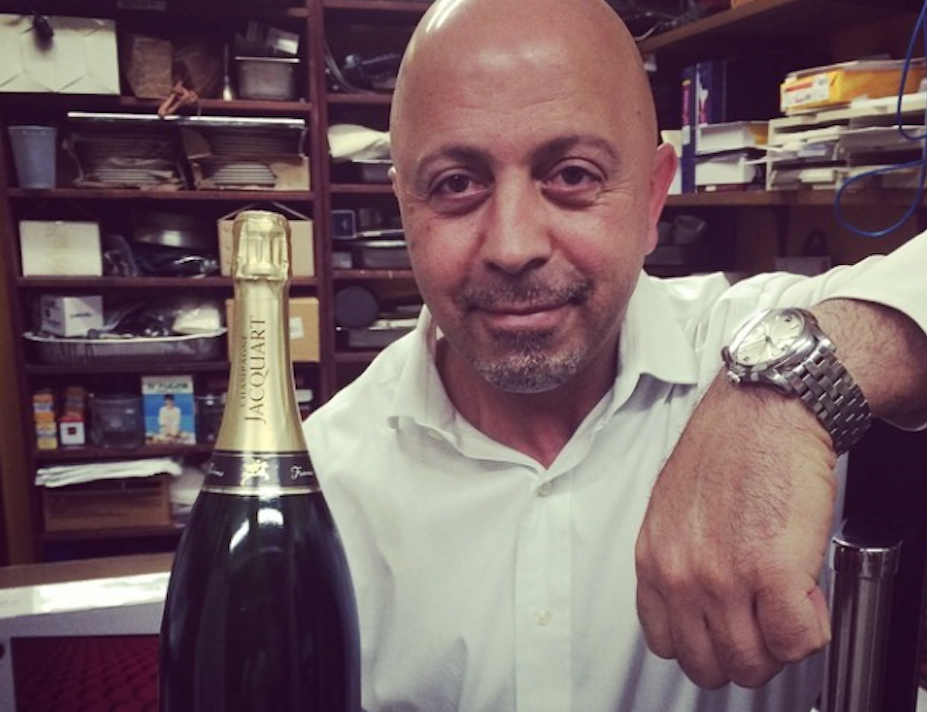 ——————————————————————————————————————————
——————————————————————————————————————————
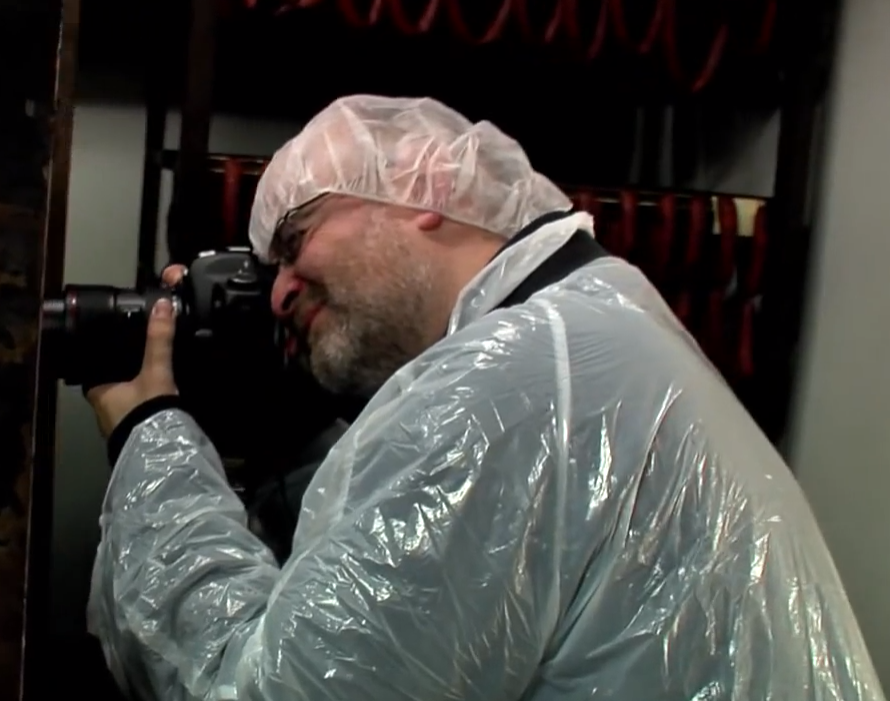 Spain was on his mindŌĆödeeply on his mind, as a panoramic backdropŌĆöseven years later, when he was writing his cookbook and trying to get signed by an agent. It can be a hard process, particularly now, with celebrity chefs and food trends having saturated the presses with a glut of cookbooks. It can be hardŌĆöbut, not universally so. The difficulty is supposed to be reserved for those hawking potential titles like ŌĆ£My GrandmotherŌĆÖs 101 Italian RecipesŌĆØ or ŌĆ£The Gluten Free Cupcakes of BrooklynŌĆØ or for whatever topic thatŌĆÖs really been beaten to death. Finding an agent and a publisher to sign off on a cookbook about something different, about subject matter thatŌĆÖs never been touched, like Spanish charcuterie, is not supposed to be much of a struggle. At least, thatŌĆÖs the conventional wisdom.
Spain was on his mindŌĆödeeply on his mind, as a panoramic backdropŌĆöseven years later, when he was writing his cookbook and trying to get signed by an agent. It can be a hard process, particularly now, with celebrity chefs and food trends having saturated the presses with a glut of cookbooks. It can be hardŌĆöbut, not universally so. The difficulty is supposed to be reserved for those hawking potential titles like ŌĆ£My GrandmotherŌĆÖs 101 Italian RecipesŌĆØ or ŌĆ£The Gluten Free Cupcakes of BrooklynŌĆØ or for whatever topic thatŌĆÖs really been beaten to death. Finding an agent and a publisher to sign off on a cookbook about something different, about subject matter thatŌĆÖs never been touched, like Spanish charcuterie, is not supposed to be much of a struggle. At least, thatŌĆÖs the conventional wisdom.
ŌĆ£I got rejections left and right. I mean, ŌĆ£Who the hell was I?ŌĆØ Weiss humbly explains to me. ŌĆ£I was just some cook, some kid who went to Cornell.ŌĆØ Of course, Weiss had lived and cooked in Spain to fulfill his ICEX scholarship by that time. He had all of what that meant. But, it didnŌĆÖt matter. ŌĆ£What was my platform? I was just a kid who went to Cornell. I didnŌĆÖt have a blog.ŌĆØ
 And, then, with my food writerŌĆÖs instincts kicking in, I understand that, maybe, that was it. Weiss wasnŌĆÖt a chefŌĆöyet. He hadnŌĆÖt moved to Pacific Grove to helm his own kitchen. There was no Jeninni Kitchen and Wine Bar. He didnŌĆÖt have the usual pedigree of being a chef and owner of a restaurantŌĆöa famous one, at that, with name recognition or like bloggers turned cookbook authors, nowadays, with thousands of followers online who can guarantee an audience.
And, then, with my food writerŌĆÖs instincts kicking in, I understand that, maybe, that was it. Weiss wasnŌĆÖt a chefŌĆöyet. He hadnŌĆÖt moved to Pacific Grove to helm his own kitchen. There was no Jeninni Kitchen and Wine Bar. He didnŌĆÖt have the usual pedigree of being a chef and owner of a restaurantŌĆöa famous one, at that, with name recognition or like bloggers turned cookbook authors, nowadays, with thousands of followers online who can guarantee an audience.
Weiss, although lacking in gestures when speaking, lifts his one handŌĆöslightly, bolstering an already naturally persuasive voice. ŌĆ£In the end, itŌĆÖs not just a charcuterie book. I never just wanted to write a book about how to make sausage. ItŌĆÖs a book about the history of this stuff. Because IŌĆÖm an American writing about it, it felt incumbent upon me to tell a larger story so that itŌĆÖs more than just a book about sausage. ItŌĆÖs a book about history, where the stuff comes from, why itŌĆÖs important, and how it informs what is done today.ŌĆØ ThatŌĆÖs whyŌĆöaside from the obvious choice of “Charcuter├Ła” for the bookŌĆÖs title, he subtitled it ŌĆ£The Soul of Spain.ŌĆØ
Then, he mentions Sally Ekus, the noted cookbook agent, who eventually signed Weiss and sold his book to Agate Publishing of Chicago. ŌĆ£I had a 95 page proposal and footnoted the whole thing. We met at Grand Central Station for what turned out to be an hour and a half meeting; and, she signed me. She believed in me. From the proposal to when the book was released, in March 2014, it was two years.ŌĆØ Weiss says this with a faint sense of relief. ItŌĆÖs as if she had rescued the book from oblivion. Maybe, IŌĆÖm injecting too much drama into it; but, in fact, in some tangible way, she had. Somebody had to believe in him.
Before Sally Ekus, Steve Chan had, of course. Weiss had consulted Chan during the proposal period. Chan remembers it well. ŌĆ£When he was doing the manuscript, he would email me to ask me for advice and for my opinion. I read chapter one. I said, ŌĆśThis is great.ŌĆÖŌĆØ Chan has great admiration for the book and for what it turned out to be. ŌĆ£ItŌĆÖs a textbook on Spanish charcuterie,ŌĆØ he asserts. ŌĆ£And, I love JeffreyŌĆÖs writing style.ŌĆØ I love it tooŌĆöhow Weiss mixes crisp, academic prose, narrative passages, with bawdy interludes and makes all of that work. ThereŌĆÖs a ballsy edge to it.
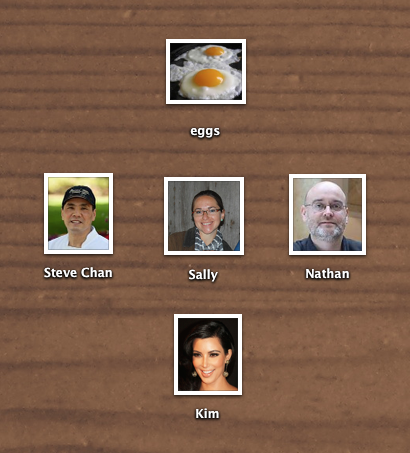 Chan thinks so too but in a slightly different way. ŌĆ£You know, he was very courageous,ŌĆØ Chan says of Weiss. ŌĆ£The topic of charcuterie, it isnŌĆÖt glamorous. He didnŌĆÖt pick a topic that was glamorous. It took a lot of balls, I think, to go in that direction. He could have done something really glitzy, you know, rather than sausage making.ŌĆØ
Chan thinks so too but in a slightly different way. ŌĆ£You know, he was very courageous,ŌĆØ Chan says of Weiss. ŌĆ£The topic of charcuterie, it isnŌĆÖt glamorous. He didnŌĆÖt pick a topic that was glamorous. It took a lot of balls, I think, to go in that direction. He could have done something really glitzy, you know, rather than sausage making.ŌĆØ
I hadnŌĆÖt thought of that, but I see that Chan is right. Weiss devoted himself to his subject matterŌĆöSpanish charcuterieŌĆöand never wavered, ŌĆ£glitzyŌĆØ or not, from presenting it to his audience, to his potential readers. ItŌĆÖs like the old adage states, ŌĆ£Sausage making isnŌĆÖt pretty.ŌĆØ But, as a man driven by a passion, however, I donŌĆÖt think Weiss really caresŌĆönot in the least.
Chan and I talk about WeissŌĆÖs book for a bit longerŌĆölong enough for us to touch upon the Gourmand World Cookbook Award, which Weiss won in the category of Foreign-International Cuisine and which had just been announced during the first week in February. Chan, who can barely muster the right words, is so outwardly proud of his┬Āprot├®g├®. “Wow, I mean, it’s crazy. I’m really happy for him.”
Our conversation, thenŌĆötaking a different turn, with Chan still talking residually about Weiss’s recognitionŌĆösegues into my recollection of Chan having been mentioned in the book. Having re-read some of the chapters just prior to meeting Weiss for our interviewŌĆöin between facts about the Visigoths and Moors, admiring photographer, Nathan RawlinsonŌĆÖs vivid photos, and flipping through an assortment of recipesŌĆöI saw a reference to ŌĆ£my mentor, Chef Steve Chan.ŌĆØ Weiss is making a point about Chan judging cooks by their ability to make eggs properly. Apparently, itŌĆÖs a protocol that Spanish chefs use as well. I ask Chan about WeissŌĆÖs referencing him in the text.
Chan doesnŌĆÖt pause. The answer is right there. ŌĆ£I was in tears. What on Earth? DonŌĆÖt do that. DonŌĆÖt do that. He doesnŌĆÖt have to. He shouldnŌĆÖt. HeŌĆÖs on a first name basis with all of these big name chefs. He can use them in the book in terms of publicity, but he mentions me?ŌĆØ Although IŌĆÖm on the phone and canŌĆÖt see his expression, I can tell that ChanŌĆÖs in utter disbelief, shaking his head.
I don’t shake my head; but, what I find remarkable and commendable, given how commonplace it is in cookbook publishing today to have cookbooks ghostwritten or, at least, co-authored by a professional writer and collaborator, is the fact that Weiss wrote the whole book, nearly 500 pages, by himself.
But, knowing WeissŌĆöwhoŌĆÖs incisive with language and articulateŌĆöit isnŌĆÖt, ultimately, surprising. He strikes me as a man whoŌĆÖs comfortable with a writing assignment. ŌĆ£I did the whole thing,ŌĆØ he says when I bring up the matter. ŌĆ£I donŌĆÖt know. Maybe, it shows where I talk about comparing the ass of an Ib├®rico pig to the ass of Kim Kardashian or comparing my first experience with good ham to that of a good blowjob. ItŌĆÖs in there.ŌĆØ Clearly, Weiss amuses himself as he offers this and punctuates his descriptions by saying, ŌĆ£I wanted to write it as a cook would.ŌĆØ
——————————————————————————————————————————
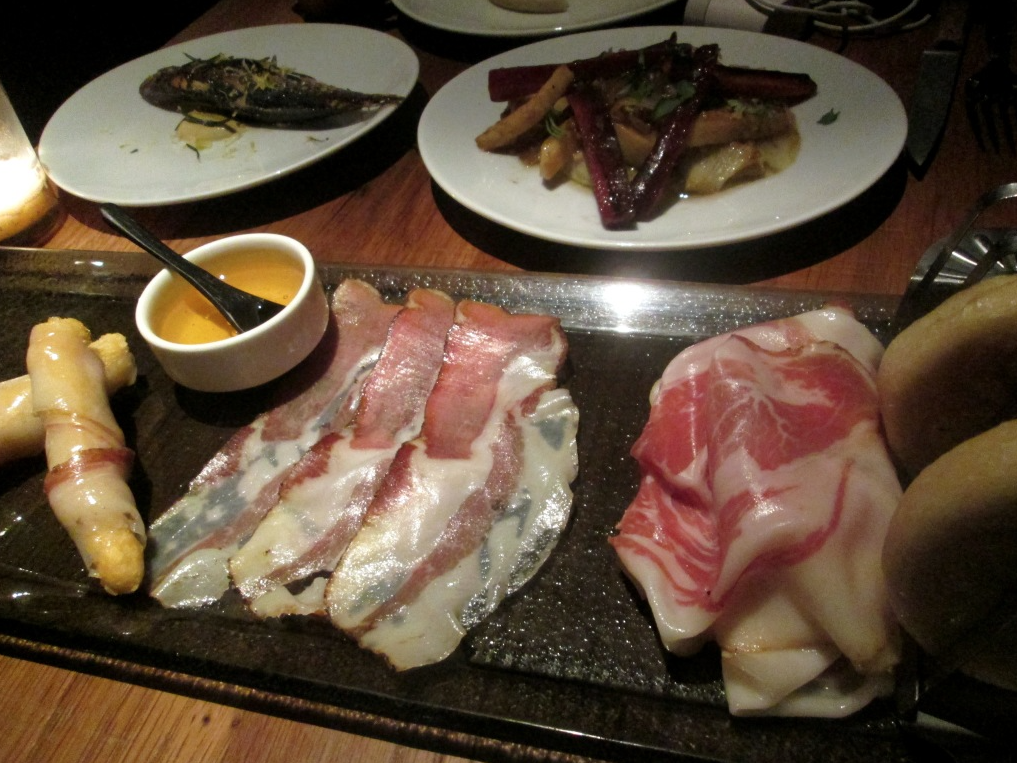 ThereŌĆÖs a respite in our conversation as Weiss and I dig further into the ham board that weŌĆÖve ordered at The PartisanŌĆöcalled, ŌĆ£Eternal Hamnation.ŌĆØ It inconsists of Italian-inspired charcuterieŌĆöChef Nathan AndaŌĆÖs house-cured prosciutto, lardo, speck, porchetta, and country ham which, in turn, we try one by one. Across from me, I can see Weiss react to a thin slice of prosciutto; his face sends out notes of approval. ThereŌĆÖs nodding and a smile of satisfaction. ThereŌĆÖs just enough there to make me think, ŌĆ£Yes, ah-ha. I understand, now, where his blowjob comment came from.ŌĆØ
ThereŌĆÖs a respite in our conversation as Weiss and I dig further into the ham board that weŌĆÖve ordered at The PartisanŌĆöcalled, ŌĆ£Eternal Hamnation.ŌĆØ It inconsists of Italian-inspired charcuterieŌĆöChef Nathan AndaŌĆÖs house-cured prosciutto, lardo, speck, porchetta, and country ham which, in turn, we try one by one. Across from me, I can see Weiss react to a thin slice of prosciutto; his face sends out notes of approval. ThereŌĆÖs nodding and a smile of satisfaction. ThereŌĆÖs just enough there to make me think, ŌĆ£Yes, ah-ha. I understand, now, where his blowjob comment came from.ŌĆØ
The lardo, which is noteworthy as well, is wrapped around a tiny breadstick; and, when I bite into it, itŌĆÖs salty, fatty, and crusty. It takes a few seconds to process the flavorsŌĆöduring which, I let out a sigh of my own and reach for more. About three feet away to my right, two women at the table next to us are intermittently glancing over at me, mumbling something indecipherable, and gawking at our food.
One of them, then, leans over and asks, ŌĆ£What are you having there?ŌĆØ She hadnŌĆÖt issued the famous line, ŌĆ£IŌĆÖll have what sheŌĆÖs having,ŌĆØ from When Harry Met Sally. Neither Weiss nor I had succumbed to gesticulation and ecstatic expressions; there wasnŌĆÖt a server around to field an immediate request. But, I feel, strangely, like Meg Ryan anyway.
ŌĆ£Ah,ŌĆØ I say. ŌĆ£Yes, this is the ham board.ŌĆØ ThereŌĆÖs a bit of being caught off guard in my answer. ItŌĆÖs barely above the din in the room. ŌĆ£This,ŌĆØ I say to her. ŌĆ£This is the lardo and the speckŌĆ”ŌĆØ Then, I take a bite of the speck as if she needs me to demonstrate how to eat it.
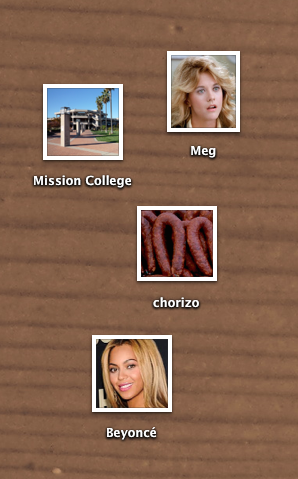 As I chew, I think back to WeissŌĆÖs book, refocus, and hear nothing but my own thoughts. ŌĆ£What kind of book could I write,ŌĆØ I ponder. Like everyone, IŌĆÖm supposed to have, at least, one good book in me. And, that book, rather than being something discrete, is, supposedly, more like a gardenŌĆöwhose constituent ideas and inspirations are planted in bursts and spells over time: years, decades.
As I chew, I think back to WeissŌĆÖs book, refocus, and hear nothing but my own thoughts. ŌĆ£What kind of book could I write,ŌĆØ I ponder. Like everyone, IŌĆÖm supposed to have, at least, one good book in me. And, that book, rather than being something discrete, is, supposedly, more like a gardenŌĆöwhose constituent ideas and inspirations are planted in bursts and spells over time: years, decades.
In WeissŌĆÖs case, the planting season had stretched back to those months following his retirement from skating when, with newfound purpose, he enrolled in the hospitality program at Mission College, a community college in Santa Clara, near San Jose where he had been living while skating. It was 2005. ŌĆ£I started at Mission College. It was a new life. I knew it was my last chance to get anywhere,ŌĆØ Weiss tells me as he puts down his fork. ŌĆ£I was so excited. I remember walking up; people were cooking. And, I said, ŌĆ£Yep, letŌĆÖs go.ŌĆØ
His fascination with Spain, which had been more fuzzy than notŌĆöand without tangible manifestationŌĆöbegan to take shape even before entering Mission College. Weiss canŌĆÖt pinpoint precisely when it happened; but, food, the notion of owning a restaurant, and being a chef had all started moving into the foreground; and, with that, the Spanish influences began to fill in as well. ŌĆ£I donŌĆÖt think I even knew what Michael RuhlmanŌĆÖs book was, but I thought about charcuterieŌĆ”one of the first times that I did.ŌĆØ Weiss stops to reflect. ŌĆ£I remember,ŌĆØ Weiss says clearly. ŌĆ£I started looking things up that I liked to cook, things I liked about Spain, and chorizo kept coming up.ŌĆØ
Chorizo, SpainŌĆÖs iconic sausage, had planted itself in his head like a viral song. It was like Beyonc├®ŌĆÖs latest in the soft potting soil of a devoted fanŌĆÖs brain. ŌĆ£I remember looking it up and googling, ŌĆśWhat is chorizo?ŌĆÖ And, I realized that a lot of recipes call for this thing called chorizo. It was everywhere I looked. But, itŌĆÖs really expensive because, at the time, there were no artisan butchers. Chorizo wasnŌĆÖt a big thing. There was nothing. I realized if I was going to have a restaurant and have a lot of that, I should try to make it. So, back then, it was already fermenting in my head.ŌĆØ
——————————————————————————————————————————
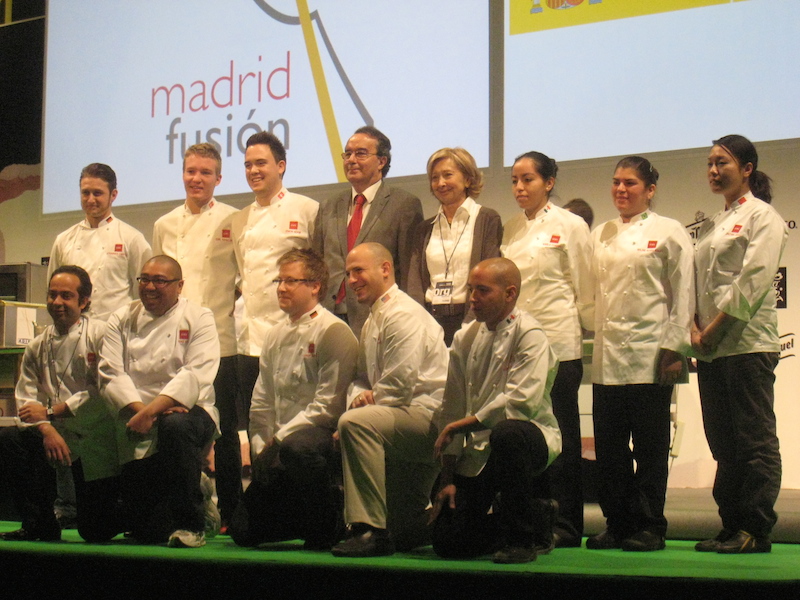 The “it” could have been chorizo, specifically, or charcuterie in generalŌĆöor, maybe, in the larger sense, Spanish food. That Weiss chose ŌĆ£fermentingŌĆØ to describe what was happening isnŌĆÖt lost on me. It may have been quite deliberate or just a casual choiceŌĆönot unlike opening up a cabinet drawer and taking the first plate thatŌĆÖs stacked on top. But, in that moment, I consider the wordŌĆÖs literal meaning. I think of that long process of transformation when something raw slowly becomes new in a more vibrant, piquant, and complex way. Then, I notice Weiss is in mid-sentence, inexplicablyŌĆöas if reading my mindŌĆöpicking up on the theme of fermentation. ŌĆ£Wine,ŌĆØ I hear him say.
The “it” could have been chorizo, specifically, or charcuterie in generalŌĆöor, maybe, in the larger sense, Spanish food. That Weiss chose ŌĆ£fermentingŌĆØ to describe what was happening isnŌĆÖt lost on me. It may have been quite deliberate or just a casual choiceŌĆönot unlike opening up a cabinet drawer and taking the first plate thatŌĆÖs stacked on top. But, in that moment, I consider the wordŌĆÖs literal meaning. I think of that long process of transformation when something raw slowly becomes new in a more vibrant, piquant, and complex way. Then, I notice Weiss is in mid-sentence, inexplicablyŌĆöas if reading my mindŌĆöpicking up on the theme of fermentation. ŌĆ£Wine,ŌĆØ I hear him say.
During WeissŌĆÖs scholarship year in Spain, before immersing himself in the kitchens of Adolfo Mu├▒oz and Dani Garc├Ła, there were the preceding monthsŌĆöa period of constant eating and imbibing. ŌĆ£I drank a lot of cava,ŌĆØ he blurts outŌĆöcava, sparkling Spanish wine. Apparently, Weiss and the others, as part of their scholarship program, had spent a month touring Spain, eating, and visiting vineyards where the wine flowed quite readily. They had their fill of it.
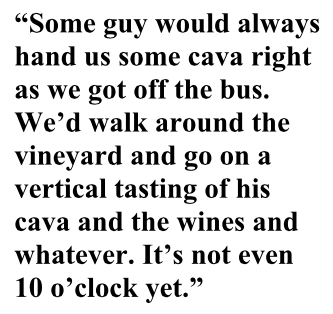 But, before that, there had been a month of language training firstŌĆöa rather perfunctory stepŌĆöat least, for Weiss since his command of Spanish was already so good. Afterwards, there was that aforementioned month of travel around Spain where Weiss and his cohorts stayed at the best hotels and dined like royalty. ŌĆ£We ate at all of the major restaurants,ŌĆØ Weiss says. He makes sure to preface his remaining remarks. ŌĆ£But, it wasnŌĆÖt all fun and games. It was work.ŌĆØ
But, before that, there had been a month of language training firstŌĆöa rather perfunctory stepŌĆöat least, for Weiss since his command of Spanish was already so good. Afterwards, there was that aforementioned month of travel around Spain where Weiss and his cohorts stayed at the best hotels and dined like royalty. ŌĆ£We ate at all of the major restaurants,ŌĆØ Weiss says. He makes sure to preface his remaining remarks. ŌĆ£But, it wasnŌĆÖt all fun and games. It was work.ŌĆØ
Most casual observers, needing that disclaimer, might not have immediately recognized it as such. The scholarship awardees got up every morning and ate breakfast and, then, they would visit a vineyard somewhere where the alcohol invariably awaited them. ŌĆ£Some guy would always hand us some cava right as we got off the bus. WeŌĆÖd walk around the vineyard and go on a vertical tasting of his cava and the wines and whatever. ItŌĆÖs not even 10 oŌĆÖclock yet. And, then, weŌĆÖd have something to eat, which would be salty. So, weŌĆÖre getting more hung over.ŌĆØ
Lunch would followŌĆötwelve courses at a 3 Michelin-starred restaurant where theyŌĆÖd eat everything only to lapse into a sluggish food coma while back on the bus and awaken from their siesta to find themselves at yet another vineyard to repeat the same litany of tastings all over again. This would be followed by dinner at a 2 or 3 Michelin-starred restaurant, of the same stellar reputation as their lunch venue, where theyŌĆÖd indulge in a 3 course dinner before jumping back on the bus to head to their hotel and, thenŌĆöremarkablyŌĆögo out for drinks afterwards as night fell. ŌĆ£That for a month is work,ŌĆØ insists Weiss. ŌĆ£WeŌĆÖre hurting. We ate so much. But, itŌĆÖs important to see that. ItŌĆÖs an education. We needed to understand what all of that was.ŌĆØ
——————————————————————————————————————————
Because Weiss had endeavored to understand Spanish cuisine, deciding to work for a French-trained Chinese chef when he didŌĆöas he enrolled at Mission College and embarked on his formal culinary educationŌĆöwas a bit of a head scratcher. There, admittedly, is some surprise and disbelief on my partŌĆösomething like, ŌĆ£What? A Chinese dude?ŌĆØ
The lessons and riches of that scholarship year in 2009 and 2010 and how that affected him were still years away and had not come to pass; but, Weiss had already visited Spain and had admitted to having Spain floating around in his head even in the waning days of his skating career. But, beginning a new chapter, that odd move to work for Steve Chan was exactly and improbably what happened.
 Weiss had a good friend, Ryan Pang, who was in the know about chefs and restaurants locally; and, one day, he dropped the name, ŌĆ£Steve Chan.ŌĆØ Chan was PangŌĆÖs mentor; and, as Chan was hiring, Pang insisted that Weiss go work for him. But, then, Weiss felt the obvious incongruity of it. ŌĆ£IŌĆÖm not going to go work for some Chinese guy,ŌĆØ Weiss had thought immediately. ŌĆ£I donŌĆÖt want to cook Chinese food.ŌĆØ However, Pang wouldnŌĆÖt give up. And, Weiss relented. The fact that ChanŌĆÖs restaurant, Lion & Compass, was about 15 minutes away from the college and that Weiss needed a job made seeking out and possibly working for Chan palatable. At least, it would be convenient.
Weiss had a good friend, Ryan Pang, who was in the know about chefs and restaurants locally; and, one day, he dropped the name, ŌĆ£Steve Chan.ŌĆØ Chan was PangŌĆÖs mentor; and, as Chan was hiring, Pang insisted that Weiss go work for him. But, then, Weiss felt the obvious incongruity of it. ŌĆ£IŌĆÖm not going to go work for some Chinese guy,ŌĆØ Weiss had thought immediately. ŌĆ£I donŌĆÖt want to cook Chinese food.ŌĆØ However, Pang wouldnŌĆÖt give up. And, Weiss relented. The fact that ChanŌĆÖs restaurant, Lion & Compass, was about 15 minutes away from the college and that Weiss needed a job made seeking out and possibly working for Chan palatable. At least, it would be convenient.
Weiss tells me about the first day when he met Chan. ŌĆ£So, Ryan set up an appointment for me. I show up at the back door with this asshole sweater, and he was, like, ŌĆśwho is this kid?ŌĆÖ Then, Steve says to me, ŌĆśNo suit, huh?ŌĆÖ IŌĆÖll never forget it.ŌĆØ It doesnŌĆÖt sound like the most auspicious beginning to me; and, not unexpectedly, Weiss continues his account by suggesting how Chan wasnŌĆÖt impressedŌĆöhow ChanŌĆÖs old school, Jacques P├®pin sensibilities would have wanted a complete novice, one who was looking for a job, to wear a suit and look presentable.
And, I can picture ChanŌĆÖs instincts firing off warning signalsŌĆösome variation of ŌĆ£Oh, my God! This kidŌĆÖs got no kitchen training whatsoever.ŌĆØ If Weiss had continued with how Chan had told him to beat it and come back in three months time after he had, at least, gotten deeper into his culinary program or to just beat it entirely, I probably wouldnŌĆÖt have thought twice about it. But, thatŌĆÖs not what happened.
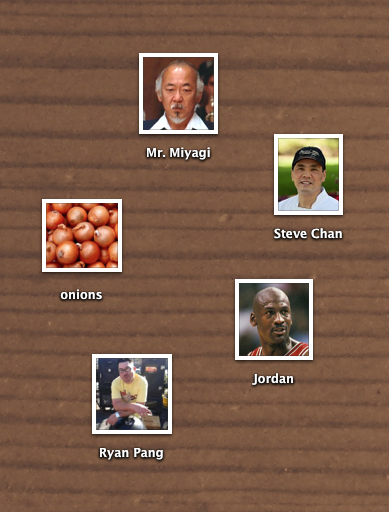 After Weiss introduced himself, he and Chan talked; and, Chan realized who he was. ŌĆ£I remember. That name rang a bell,ŌĆØ Chan recalls. ŌĆ£I said to him, ŌĆśYou look familiar.ŌĆÖ Then, moments later, when I learned that he was a skater, I said, ŌĆśOh, yesŌĆ”Jeff Weiss.ŌĆÖ I had heard of him. I knew of him.ŌĆØ I ask Chan if he had been a skating fan and had followed WeissŌĆÖs career. ŌĆ£No, not like that. He wasnŌĆÖt a household name or anything. But, I respected the fact that he was a world-class athlete. Then, he humbled himself and came to the backdoor. He told me, ‘I want to be a chef. I want to open a restaurant.ŌĆÖ I said, ŌĆśOh, okay.ŌĆÖ Then, we sat down and had a chat. And, he told me about his plans.ŌĆØ
After Weiss introduced himself, he and Chan talked; and, Chan realized who he was. ŌĆ£I remember. That name rang a bell,ŌĆØ Chan recalls. ŌĆ£I said to him, ŌĆśYou look familiar.ŌĆÖ Then, moments later, when I learned that he was a skater, I said, ŌĆśOh, yesŌĆ”Jeff Weiss.ŌĆÖ I had heard of him. I knew of him.ŌĆØ I ask Chan if he had been a skating fan and had followed WeissŌĆÖs career. ŌĆ£No, not like that. He wasnŌĆÖt a household name or anything. But, I respected the fact that he was a world-class athlete. Then, he humbled himself and came to the backdoor. He told me, ‘I want to be a chef. I want to open a restaurant.ŌĆÖ I said, ŌĆśOh, okay.ŌĆÖ Then, we sat down and had a chat. And, he told me about his plans.ŌĆØ
I realize nowŌĆöin speaking with Steve Chan on the phoneŌĆöthat in coming to Chan, Weiss had found the perfect landing spot. Chan, besides being every bit a general leading his troops, is, at his core, a teacher. It takes only a minute of talking to him to figure that out. ŌĆ£I think thatŌĆÖs why Ryan brought Jeffrey to me. I have a passion for teaching. People tried to push me to be a celebrity chef, and I flirted with it. I was a columnist for the San Jose Mercury News for a time. But, to be a famous chef, you have to leave the kitchen. And, I wanted to be in the kitchen. I love to teach. I love it. Over the years, IŌĆÖve influenced so many chefs. Who would trade fame for that?ŌĆØ
Taking PangŌĆÖs advice, Weiss had stashed his set of knivesŌĆömeticulously sharpened onesŌĆöin the trunk of his car. It may have been Weiss rushing out to his car to retrieve them that had impressed Chan; or, it may have been ChanŌĆÖs own desire to take on the challenge of making something out of WeissŌĆöthis skater turned culinary aspirantŌĆöthat intrigued him. It was very likely that something in his heart, something connected to his love for shaping students into chefs, had been piqued. In any case, Weiss was hired and started that day.
ŌĆ£Most kids start when theyŌĆÖre 18. He was 28 or something,ŌĆØ Chan says to me in explaining what his initial thoughts were when he took Weiss on board. ŌĆ£We had to play catch-up essentially. I needed to accelerate his learning curve. He needed to cram in a lot of learning in a short period of time.ŌĆØ
 The first order of business, in that regard, was learning knife skills. ŌĆ£IŌĆÖm from the old school. Without knife skills, you canŌĆÖt cook. Knife skills are everything.ŌĆØ Chan tells me that when he was an apprentice, all he did his first year was learn how to cut. He prepped everything for everyone in the kitchen. HeŌĆÖd cut and learned how to manipulate a knife until he became an expert. ŌĆ£I could carve roses with a paring knife before I knew how to cook.ŌĆØ
The first order of business, in that regard, was learning knife skills. ŌĆ£IŌĆÖm from the old school. Without knife skills, you canŌĆÖt cook. Knife skills are everything.ŌĆØ Chan tells me that when he was an apprentice, all he did his first year was learn how to cut. He prepped everything for everyone in the kitchen. HeŌĆÖd cut and learned how to manipulate a knife until he became an expert. ŌĆ£I could carve roses with a paring knife before I knew how to cook.ŌĆØ
Once Weiss put on his apron, the schooling began. WeissŌĆÖs first task, not surprisingly, was to cut onions. But, Weiss had barely begun before Chan interrupted to say, ŌĆ£Stop. You have to start over. YouŌĆÖre hurting my ears.ŌĆØ Weiss shows me what he was doingŌĆöusing what he describes as a ŌĆ£guillotine motion,ŌĆØ a rigid stroke where the blade is perpendicular to the cutting board. Chan, then, showed him how to cut the onions properly. Weiss, similarly, demonstratesŌĆöthis time, with a graceful, slightly angled motion that I can tell would have made short and efficient work of those onions.
Apparently, there were a lot of onions. ŌĆ£That first night, I was cutting fucking onions for eight hours or whatever it was. I cut nothing but fucking onions over and over. I had to peel them, julienne them over and over again. That repetition wasnŌĆÖt by accident. It wasnŌĆÖt due to the fact that Chan happened to be in possession of a lot of onions that needed cutting. Rather, forcing Weiss to engage in repetitive knife work was part of ChanŌĆÖs teaching style.
It was central to how he trained his cooks. If teaching was one indelible part of his being a chef; then, engaging in hard work was the otherŌĆöbut, not ŌĆ£hard workŌĆØ in that trite, every day sense. He means it in the Chinese senseŌĆöŌĆ£kung fuŌĆØ (which, Chan, deliberately pronounces in its proper Cantonese as ŌĆ£goewng fooŌĆØ).
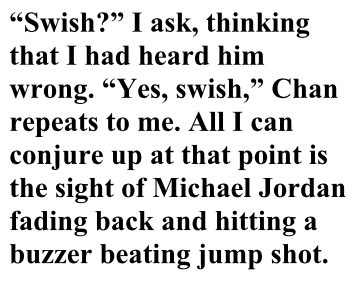 ŌĆ£Kung fu,ŌĆØ philosophically, has within it arduous practice and devotionŌĆöall of which are needed to achieve proficient skill. OneŌĆÖs ŌĆ£kung fu,ŌĆØ as it were, could be applied to calligraphy, pottery, welding, or, yes, very commonly, cookingŌĆöand, by extension: knife skills. Although pop culture would have us believe otherwise, ŌĆ£kung fuŌĆØ is not an exclusively martial arts concept. Chan is a quintessential ŌĆ£kung fuŌĆØ practitioner if the concept is taken as intended. And, by his words, itŌĆÖs abundantly clear that he is.
ŌĆ£Kung fu,ŌĆØ philosophically, has within it arduous practice and devotionŌĆöall of which are needed to achieve proficient skill. OneŌĆÖs ŌĆ£kung fu,ŌĆØ as it were, could be applied to calligraphy, pottery, welding, or, yes, very commonly, cookingŌĆöand, by extension: knife skills. Although pop culture would have us believe otherwise, ŌĆ£kung fuŌĆØ is not an exclusively martial arts concept. Chan is a quintessential ŌĆ£kung fuŌĆØ practitioner if the concept is taken as intended. And, by his words, itŌĆÖs abundantly clear that he is.
ŌĆ£I run my kitchen under the French brigade system but with Chinese principles. ŌĆ£I donŌĆÖt teach you HOW to cook. I teach you how to BE a cook. ThatŌĆÖs how I trained Jeffrey. You have to work. You have to train. Repetition breeds perfection. Repetition. Repetition. Right? ThatŌĆÖs kung fu. Everyone has work to do, something to perfect.ŌĆØ
Chan, of course, had his own ŌĆ£kung fuŌĆØ to worry about as wellŌĆölike running a restaurant and working the line and ŌĆ£leading his troops.ŌĆØ And, as WeissŌĆÖs first day led into that nightŌĆÖs dinner service, thatŌĆÖs exactly what Chan did. However, the kitchen at Lion & Compass was laid out as such that there was an L-shaped section where Chan had his back to Weiss and was around the corner. That was where Chan stood. Weiss uses his handsŌĆögesturing, pointing, drawing lines in the airŌĆöto show me the physical layout and to set up the punch line. ŌĆ£Steve would yell around the corner to me, ŌĆśI can hear you doing it wrong.ŌĆÖŌĆØ
ThereŌĆÖs a distinctive sound to cutting onions. And, apparently, Weiss wasnŌĆÖt close. Chan tells me thereŌĆÖs a ŌĆ£certain kind of swishŌĆØ when someoneŌĆÖs really efficient. ŌĆ£Swish?ŌĆØ I ask, thinking that I had heard him wrong. ŌĆ£Yes, swish,ŌĆØ Chan repeats to me. All I can conjure up at that point is the sight of Michael Jordan fading back and hitting a buzzer beating jump shot. The ball goes through the hoopŌĆöslicing through the net, cutting it into thin julienned strips.
ŌĆ£Well,ŌĆØ Chan, then, addsŌĆöinterrupting my mental image just as I see fans storm the court. ŌĆ£ThereŌĆÖs the staccato, the rhythm too. When someoneŌĆÖs efficient and applying his edge properly, itŌĆÖs clean. ThereŌĆÖs a staccato. You can hear it.ŌĆØ
 Weiss, of course, isnŌĆÖt privy to ChanŌĆÖs comments; and, neither am I. My conversation with Chan hadnŌĆÖt taken place yet. So, we linger on these words: ŌĆ£He can hear me doing it wrong?ŌĆØ I canŌĆÖt believe it either. Weiss says it, seemingly, without losing any of his original dismay. ItŌĆÖs as if heŌĆÖs back in ChanŌĆÖs kitchen. ŌĆ£He can hear me doing it wrong? What the fuck? Who the hell is this guy?ŌĆØ
Weiss, of course, isnŌĆÖt privy to ChanŌĆÖs comments; and, neither am I. My conversation with Chan hadnŌĆÖt taken place yet. So, we linger on these words: ŌĆ£He can hear me doing it wrong?ŌĆØ I canŌĆÖt believe it either. Weiss says it, seemingly, without losing any of his original dismay. ItŌĆÖs as if heŌĆÖs back in ChanŌĆÖs kitchen. ŌĆ£He can hear me doing it wrong? What the fuck? Who the hell is this guy?ŌĆØ
That last question is rhetorical, but Weiss answers it indirectly anyway. ŌĆ£I mean, the whole thing was very Mr. Miyagi-esque.ŌĆØ Weiss and I both laugh. Apparently, as time passed and he and Chan settled into their respective rolesŌĆöas ŌĆ£masterŌĆØ and ŌĆ£apprenticeŌĆØ and, at that, shrouded in the kung fu philosophy that Chan undoubtedly made manifest on a regular basisŌĆöWeiss frequently and affectionately called Chan ŌĆ£Mr. Miyagi,ŌĆØ the character that Pat Morita made famous in the Karate Kid movies.
On the phone, I ask Chan about being called, ŌĆ£Mr. Miyagi.ŌĆØ ŌĆ£Yeah, he calls me that all the timeŌĆöthat and ŌĆ£SifuŌĆØ (Cantonese for ŌĆ£masterŌĆÖ). But, ‘Mr. Miyagi,’ I donŌĆÖt mind it. I know heŌĆÖs just kidding, but I want him to address me as a friend, you know, and not a teacher. ThatŌĆÖs all. But, IŌĆÖm tickled by it. IŌĆÖm just thankful for him even to think that of me.ŌĆØ Chan stops himself. For a second, I wonder if the phone line is dead. Then, I hear his voice come backŌĆöthis time with a snicker. ŌĆ£But, the truth is, my teaching method is kind of like that.ŌĆØ
To me, the moniker, ŌĆ£Mr. MiyagiŌĆØ seems to be a perfect characterization of the man because I can imagine ChanŌĆöhaving asked Weiss to clean a stainless steel table with two sponges. And, Weiss, begrudgingly or not, would, no doubt, have cleaned it as told by employing that classic wax-on/wax-off circular motion until his arms achedŌĆöall the while wondering, ŌĆ£Why the fuck am I doing this?ŌĆØ
Years later in his own restaurant, without Chan there and humbly volunteering, and as Weiss is scrubbing his own paella panŌĆöit would have been a great moment to recall, relive, and understand.
——————————————————————————————————————————
The Partisan isnŌĆÖt one of those restaurants where itŌĆÖs so dark that it resembles a movie theater. It has large windows at the front of the restaurant that allow the glow from the streetlights to seep inside, to tease the dining room out of the night. The blonde, wooden table tops are clean, pristine and collaborate with that lighting. They provide a pleasing contrast to all of the reddish, brownish earthy food. Looking up, the walls, interchangeably of wood paneling and exposed brick, donŌĆÖt turn into black holes and fade into inaccessible shadows.
As I lean into the banquette behind me, take another sip of water, and look beyond our table, thereŌĆÖs more than enough light to catch a glimpse of the open kitchen, which is at an angle to me. Line cooks, runners, and servers move in a busy cacophonyŌĆöcrisscrossing, moving out of each otherŌĆÖs way. ItŌĆÖs the height of dinner service. A plate of bone marrow, some pasta that IŌĆÖm guessing is bucatini, and what appears to be lamb ribs pass in front of me. That flash of selections is a brief feast for my eyes.
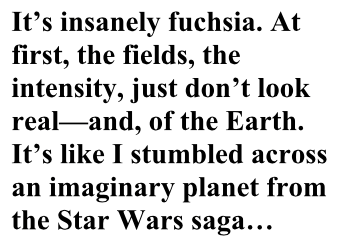 Then, from my left, a man emerges from about 10 feet away and obscures the onslaught of food. He walks toward Weiss and, after a few steps, greets him. HeŌĆÖs a big man with a round face and a disarming presence about him. Weiss and the man talk. ItŌĆÖs friendly but not demonstratively so. I assume heŌĆÖs a server. ŌĆ£Are we ordering more?ŌĆØ
Then, from my left, a man emerges from about 10 feet away and obscures the onslaught of food. He walks toward Weiss and, after a few steps, greets him. HeŌĆÖs a big man with a round face and a disarming presence about him. Weiss and the man talk. ItŌĆÖs friendly but not demonstratively so. I assume heŌĆÖs a server. ŌĆ£Are we ordering more?ŌĆØ
I find out later, after IŌĆÖve returned home, recall the brief exchange, and do some online investigatingŌĆöwith a nagging hunch having surfacedŌĆöthat the man in question is none other than Nathan Anda, the chef who’s responsible for our ham board, the one behind the charcuterie program at Red Apron Butchery and The Partisan, its sister restaurant, which adjoins it and where Weiss and I are now. But, my eyes betray me. I had seen photos of Ed Witt, the executive chef at The Partisan; and, I had gotten his image lodged in my headŌĆöthinking he was Anda. In fact, Weiss isn’t ordering more food. We didnŌĆÖt have any more; and, as it turns out, he wasn’t just chit-chatting with some anonymous server.
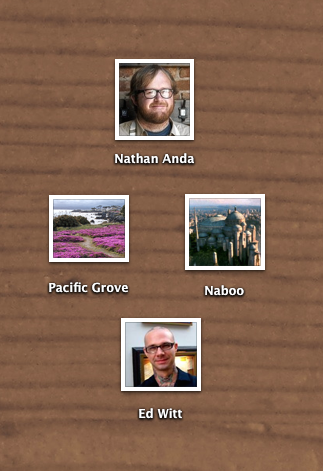 Instead, he and Anda were likely exchanging ideas about food, curing meats, the proper level of humidity and the exact amount of salt thatŌĆÖs needed, things that men of their backgrounds would talk aboutŌĆöWeiss and Anda, two of the high priests of charcuterie. But, I don’t realize it. It’s a case of confusion and brain freeze.
Instead, he and Anda were likely exchanging ideas about food, curing meats, the proper level of humidity and the exact amount of salt thatŌĆÖs needed, things that men of their backgrounds would talk aboutŌĆöWeiss and Anda, two of the high priests of charcuterie. But, I don’t realize it. It’s a case of confusion and brain freeze.
ItŌĆÖs a frigid day and I glance outside to see a couple, bundled in overcoats, walk pastŌĆöbracing themselves against an uncommonly fierce wind thatŌĆÖs more characteristic of Chicago or Minsk, for that matter, than Washington, DC. Weiss is still talking with that man (Nathan Anda, naturally). I take a look at my watch and sit, relaxing, and take a piece of porchetta from the ham board as Weiss isnŌĆÖt lookingŌĆönot that IŌĆÖm being sneaky about it.
ItŌĆÖs at that point as Weiss has his attention elsewhereŌĆöas I hear nothing but see him forming words out of the corner of my eyeŌĆöthat I, unexpectedly, think of Pacific Grove again. The sky is wide and frisky, like it’s shrugging off a bout of cabin fever, and embraces every bird in flight. There are white seagulls circling overhead. I donŌĆÖt know if these birds are part of the ecosystem out there at all or if my own storehouse of memories of fishing on MarylandŌĆÖs Eastern Shore has bled into what IŌĆÖm seeing now.
Later, I google ŌĆ£Pacific GroveŌĆØ and find the most stunningly beautiful images of the sea coast that IŌĆÖve ever seen. Blue ocean waves wash up against expressive, craggy rocks; and, itŌĆÖs juxtaposed against undulating fields of the most intense color. ItŌĆÖs insanely fuchsia. At first, the fields, the intensity, just donŌĆÖt look realŌĆöand, of the Earth. ItŌĆÖs like I stumbled across an imaginary planet from the Star Wars sagaŌĆöa Naboo or EndorŌĆöwith the camera panning in to set the sceneŌĆöin an alien paradise where color and natural beauty saturates the landscape.
But, that landscape is real; and, I canŌĆÖt take my eyes off of it. The fuchsia comes from something ironically called ŌĆ£ice plants,ŌĆØ a lush blanket of densely packed flowers that blossom and come brilliantly alive in April and May. Pacific Grove is famous for its ice plants. Tourists come in droves in the spring just to see them.
——————————————————————————————————————————
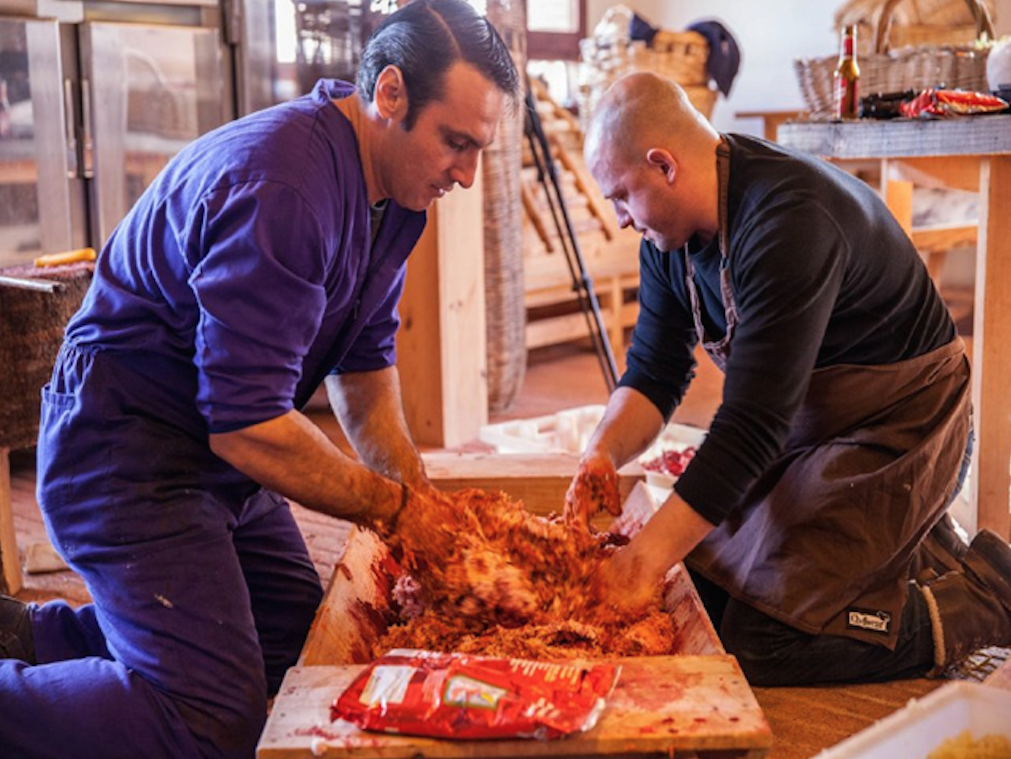 In the winter, in Spain, itŌĆÖs time to kill the pigs. ItŌĆÖs a time when a chill fills the air, between October and March, and acorns, having matured, fall from the oak trees to litter the ground in the dehesa, the pastureland set aside for the raising of SpainŌĆÖs treasured Iberian pigs. There, the prized breedŌĆöknown for its intramuscular fatŌĆögraze and feed on the fallen acorns during a period, called the montanera, when the prime ones fatten up on a bounty of carbohydrates and head to slaughter.
In the winter, in Spain, itŌĆÖs time to kill the pigs. ItŌĆÖs a time when a chill fills the air, between October and March, and acorns, having matured, fall from the oak trees to litter the ground in the dehesa, the pastureland set aside for the raising of SpainŌĆÖs treasured Iberian pigs. There, the prized breedŌĆöknown for its intramuscular fatŌĆögraze and feed on the fallen acorns during a period, called the montanera, when the prime ones fatten up on a bounty of carbohydrates and head to slaughter.
That slaughter, or matanza as itŌĆÖs known, is a special ritualŌĆöan event, really, an occasionŌĆöthatŌĆÖs embedded in the tradition and culture of southwestern Spain, particularly, in the Extremadura region where the dehesas are found and where Weiss, during his scholarship year, spent the early months of 2010. During a given season, there are typically several matanzasŌĆöeach lasting two or three days. Each time, once a pig is slaughtered, the special cuts from the head and torso are harvested and set aside as are the hind legsŌĆöwith hooves intactŌĆöwhich, when cured, will become jam├│ns, the famed Ib├®rico hams. Much of the rest, including the glorious fat, is used to make embutidosŌĆösausages: morcilla and chorizo among them.
Weiss, obviously, wanted to experience a matanza. It was something vital to Spanish charcuterie that he would not have wanted to miss. But, he almost did. The matanza portion of the year was, actually, canceled for that winter due to a lack of fundsŌĆöresulting from the financial crisis that plagued Spain and much of Europe at that time. Weiss tells me this, but I canŌĆÖt really comprehend it. ŌĆ£ICEX ran out of money?ŌĆØ Weiss was terribly upset; but, Adolfo Mu├▒oz, for whom Weiss was cooking at the time in Toledo, came to the rescue. It was a slow period at the restaurant. Mu├▒oz devised a plan.
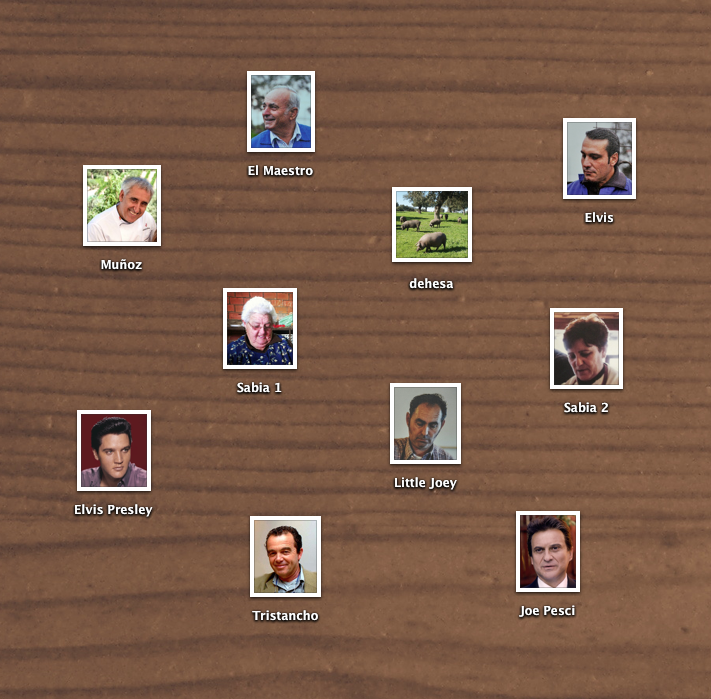 He set Weiss up with Carlos Tristancho, the famous Spanish actor and culinary impresario who owned the Rocamador, a converted monastery, hotel, and pig farm in the Extremaduran countrysideŌĆöwhere matanzas were performed. Tristancho took Weiss in as a guest at his hotel. In exchange, Weiss worked in TristanchoŌĆÖs Michelin-starred restaurant inside the hotel. ŌĆ£TheyŌĆÖre going to teach you,ŌĆØ Mu├▒oz said. ŌĆ£They will show you everything.ŌĆØ Weiss, telling me this, still canŌĆÖt fathom the good fortune that fell on him and how it all came together. ŌĆ£So, I went out there. Carlos and his family took care of me.ŌĆØ
He set Weiss up with Carlos Tristancho, the famous Spanish actor and culinary impresario who owned the Rocamador, a converted monastery, hotel, and pig farm in the Extremaduran countrysideŌĆöwhere matanzas were performed. Tristancho took Weiss in as a guest at his hotel. In exchange, Weiss worked in TristanchoŌĆÖs Michelin-starred restaurant inside the hotel. ŌĆ£TheyŌĆÖre going to teach you,ŌĆØ Mu├▒oz said. ŌĆ£They will show you everything.ŌĆØ Weiss, telling me this, still canŌĆÖt fathom the good fortune that fell on him and how it all came together. ŌĆ£So, I went out there. Carlos and his family took care of me.ŌĆØ
IŌĆÖm sure, to a large degree, Weiss is referring to his lodging, his meals, and the generally warm and generous hospitality that he received. He repeats the term ŌĆ£my familyŌĆØ in describing the people that he met there. But, in taking care of him, of courseŌĆöTristancho, in particularŌĆöensured that Weiss wouldn’t go home, back to the States, having missed out on something that had become so central to his culinary psyche and that had turned into a void of nagging curiosity. No amount of extracurricular research online and googling, as Weiss was apt to do, could ever have come close to doing it justice.
And, ultimately, he got deeply involvedŌĆöworking side by side with the men and women of the matanza. One groupŌĆöthe matanceros, the butchersŌĆöwere responsible for dispatching the pigs and doing the heavy work of cutting up the carcasses into its requisite parts. The team that Weiss fell in with was a motley crew, a seasoned bunch who had participated in their share of slaughters, and who were, weirdlyŌĆöas Weiss tells meŌĆöall named, Jos├®.
Although they all looked quite different and ranged in age, Weiss needed to assign them different names to mentally keep track of them. The oldest fellow, grizzled and with a paunch, became ŌĆ£El Maestro.ŌĆØ Another fellow who could have passed for actor, Joe PesciŌĆÖs doppelganger, became ŌĆ£Little Joey;ŌĆØ and, still another, a strikingly handsome fellow with long sideburns who appeared to have lifted his hair-style from 1956, became ŌĆ£Elvis.ŌĆØ
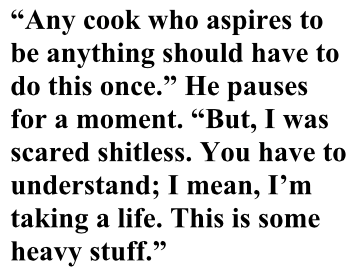 The other group, whose membership consisted of a band of women, was the sabias, literally, the ŌĆ£wise women.ŌĆØ Not deviating from that description, they all looked the partŌĆönot ŌĆ£oldŌĆØ necessarilyŌĆöbut exuding knowledge in their invariably worn faces and their creviced hands that seemed as if they had never touched a drop of hand lotion or moisturizer. They took the meat, offal, bones, blood, and entrails and processed them and, through their manual labor, turned all of that stuff into food.
The other group, whose membership consisted of a band of women, was the sabias, literally, the ŌĆ£wise women.ŌĆØ Not deviating from that description, they all looked the partŌĆönot ŌĆ£oldŌĆØ necessarilyŌĆöbut exuding knowledge in their invariably worn faces and their creviced hands that seemed as if they had never touched a drop of hand lotion or moisturizer. They took the meat, offal, bones, blood, and entrails and processed them and, through their manual labor, turned all of that stuff into food.
Weiss learned precision as he followed the butchers who expertly cut and hacked away at just the right intersection of flesh, muscles, and membranes to maximize the yield and minimize the waste. He learned how to grind, mix, encase, and season the meat using time-honored methods and long-standing recipes that the sabias retrieved from their memory. ŌĆ£Every weekend, we were killing three pigs. So, one weekend, I would spend only with the butchers, the next weekend only with the sabias. Another weekend, I would do more with the butchers, more with the sabias.ŌĆØ I can tell that he can see the sights, sounds, and smells all over again. His eyes light up. His tone becomes ripe with intent. I lean in.
ŌĆ£It got to a point where they finally let me kill a pig,ŌĆØ Weiss says with his eyes bright and his words stronger than before. ŌĆ£Any cook who aspires to be anything should have to do this once.ŌĆØ He pauses for a moment. ŌĆ£But, I was scared shitless. You have to understand; I mean, IŌĆÖm taking a life. This is some heavy stuff.ŌĆØ Weiss looks at me. ŌĆ£This is the meat thatŌĆÖs going to feed a family for a year. So, I donŌĆÖt want to fuck it up because of that.ŌĆØ
But, there were other reasons too. There was the respect for the tradition of the matanza and respect for the animal giving its lifeŌĆöwhich Weiss felt heavily as he pondered what was about to happen. Perhaps, to invest religion into the mix would have been too much; but, killing the pig and to consider it a sacrifice was, indeed, in the realm of the ŌĆ£sacredŌĆØ in the fullest secular sense. ŌĆ£ItŌĆÖs a big deal,ŌĆØ Weiss undeniably admits. ŌĆ£And, theyŌĆÖre looking at me, handing me a knife and saying, ŌĆśyouŌĆÖre going to do this.ŌĆÖŌĆØ
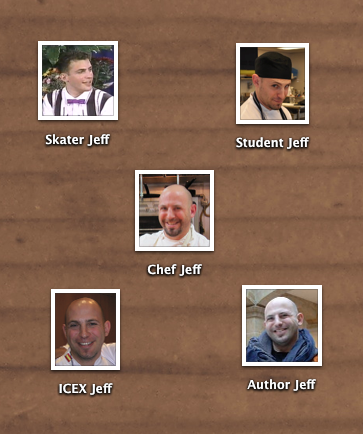 He did. His cohort of butchers assistedŌĆögrabbing the pig, holding it down, positioning it on the killing block, with a rope pulled up and back so that Weiss, holding that knife, could cut the pig and take its life as quickly and humanely as possibleŌĆöto limit the struggle and the amount of adrenaline that might course through the pigŌĆÖs body, which would ruin the meat.
He did. His cohort of butchers assistedŌĆögrabbing the pig, holding it down, positioning it on the killing block, with a rope pulled up and back so that Weiss, holding that knife, could cut the pig and take its life as quickly and humanely as possibleŌĆöto limit the struggle and the amount of adrenaline that might course through the pigŌĆÖs body, which would ruin the meat.
For Weiss, the goal was to cut the carotid arteryŌĆöŌĆ£right there where the clavicles meet.ŌĆØ However, there was no visual aidŌĆöno vein standing out from under the skin to signal, ŌĆ£Hey, right hereŌĆØ as it might when a patient sits to have his blood drawn by a phlebotomist at a medical clinic. One just has to know. El Maestro didnŌĆÖt move in close to Weiss to steady his hand and intervene. And, Elvis, perhaps, not wanting Weiss to step on his ŌĆ£blue suede shoes,ŌĆØ didnŌĆÖt either.
Weiss takes his hand and curls his index finger and thumb together to mimic the size of a dime. ŌĆ£ThatŌĆÖs how big the hole was when they did it,ŌĆØ he says. Then, he takes his hands and cups them together to form an ovalŌĆöroughly the size of a hamburger bun. ŌĆ£Mine was like that.ŌĆØ He smiles. ŌĆ£Okay,ŌĆØ he adds. ŌĆ£Maybe, IŌĆÖm exaggerating just a little.ŌĆØ I know that he is, but the sight of that ŌĆ£hamburger bunŌĆØ admittedly has me fooled for just a second.
The serious nature of the kill is balanced with some light-hearted fun as well. Weiss lets me know that the guys had joked about his effortsŌĆöribbing him about being ŌĆ£an assassinŌĆØ or having learned how to kill ŌĆ£on the streets of New York.ŌĆØ Later, once the ensuing sausage-making commenced, the sabias joined in. They ŌĆ£bustedŌĆØ his ŌĆ£ballsŌĆØ with double entendresŌĆönot allowing the ŌĆ£littleŌĆØ and ŌĆ£limpŌĆØ sausages that he made go unnoticed and pass without commentary.
With WeissŌĆÖs taking the last sip of bourbon from his glass, he leans back in his chair. HeŌĆÖs full, and so am I. We look down at the ham board thatŌĆÖs more board than ham at this point. ItŌĆÖs the wood grain that I notice. Our server comes over to check on us again. My glass is filled.
Weiss takes a moment to reflect. ŌĆ£I think the matanza is the kind of thing you get used to if you do enough of them. But, IŌĆÖm not a professional pig killer; and, I donŌĆÖt think that IŌĆÖm ever going to be. But, I respect it and appreciate it.ŌĆØ I nod in silent agreement. WeissŌĆÖs countenance is one of fulfillment and accomplishment. ŌĆ£I know firsthand, now,ŌĆØ he says. ŌĆ£What it all means.ŌĆØ
Copyright 2015 (Corbo Eng). All rights reserved.
Photos, excluding those appearing in the thumbnail panels, are courtesy of Jeffrey Weiss, Nathan Rawlinson, WIA Spain, and Jeninni Kitchen & Wine Bar.
